Samsung The Frame LS03D (2024) is not just an ordinary TV that you place in the corner and forget about after two days. Right away, it’s clear that the manufacturer aimed for more than just displaying movies. First, the "Art" mode grabs attention – with just a few clicks, we can turn The Frame into a digital gallery, showcasing works that, combined with the matte screen, really resemble a real painting in a frame. Speaking of frames, we have the option to customize its colour to perfectly match our interior. Additionally, in the package, we’ll find a wall mount, which allows the TV to be hung virtually “flat”, enhancing the impression of engaging with a piece of art rather than a typical screen. The matte display provides great protection against light reflections, and paired with high brightness (650 cd/m²), it performs well even in full sunlight. On top of that, we have a VA panel with quite decent contrast and a refresh rate of 120 Hz, so watching sports or playing dynamic titles looks really smooth and pleasing to the eye. Adding to this are the gaming features – VRR, ALLM, and HGiG – indicating that Samsung also thought about console and PC fans. As a result, Samsung The Frame can serve as both a picturesque decoration for the living room and a rather sensible gaming monitor. The mentioned One Connect is another handy gadget – it allows us to hide all cables in one place, requiring only a thin cable connecting the TV to that magic box. If we like order, this is a solution designed for us. Another advantage is the Tizen system – easy to use, fast, and full of apps. While it may not have absolutely everything (e.g., the Tidal app), it still offers a wide range of options when searching for additional streaming platforms. Of course, there’s no rose without thorns. The lack of local dimming is noticeable in dark scenes, where the blacks become less distinct. We also have to remember that there’s only one HDMI 2.1 port, so if we want to connect more devices at 4K and 120 Hz, we might feel limited. Besides, the viewing angles are rather average, so it’s better if the most important viewer (that’s us) sits directly in front of the TV. For Dolby Vision lovers, it won’t be the ideal choice either, as The Frame LS03D only supports HDR10 and HDR10+. Additionally, the sound – like in most slim TVs – is average, so it’s worth considering a soundbar if we care about clearer bass and a deeper sound. Despite these weaker points, The Frame still makes a great impression. It’s striking, stylish, and versatile – suitable for both watching the latest hits and displaying reproductions of paintings on the wall. If we value an extraordinary appearance, high brightness, and want to play something with low input lag, then this model will be a perfect choice. And while it may not be the leader in cost-effectiveness nor a technological "monster" in terms of picture quality, it has something that is simply likable. It’s a piece of equipment that stands out with its unique character and can fit into any interior, attracting attention both in TV mode and digital art gallery mode.
- Matching (Score)
- Our verdict
- TV appearance
- Where to buy
- Contrast and black detail
- HDR effect quality
- Factory color reproduction
- Color reproduction after calibration
- Smoothness of tonal transitions
- Image scaling and smoothness of tonal transitions
- Blur and motion smoothness
- Console compatibility and gaming features
- Input lag
- Compatibility with PC
- Viewing angles
- TV efficiency during daytime
- Details about the matrix
- TV features
- Apps
- Playing files from USB
- Sound
Samsung The Frame LS03D vs Samsung QN85F
Direct compare
The Frame / LS03D
QN85F

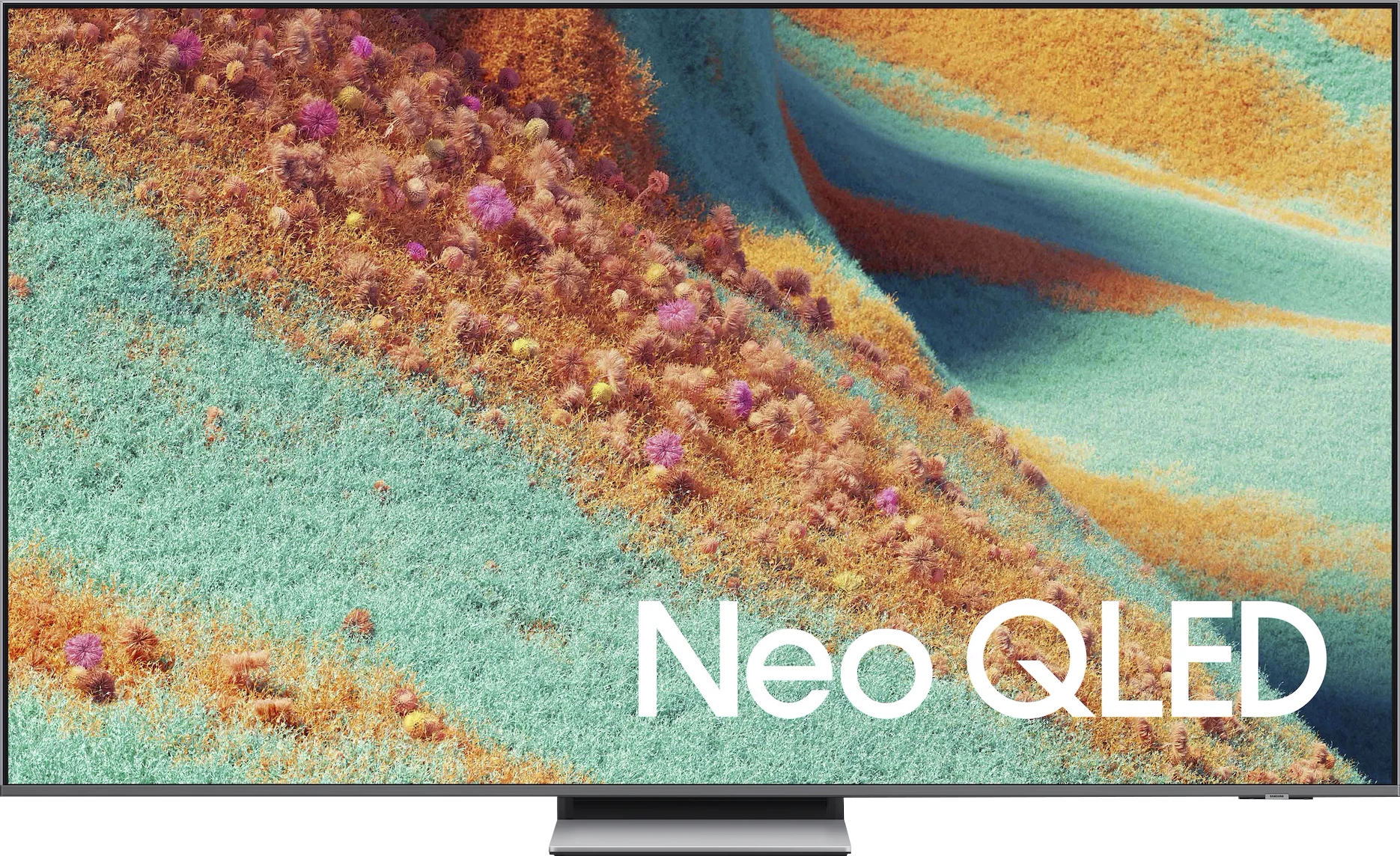
Panel type: LCD VA
Resolution: 3840x2160
System: Tizen
Model year: 2024
Complete the survey to find out the result

Panel type: LCD VA
Resolution: 3840x2160
System: Tizen
Model year: 2025
Complete the survey to find out the result

Overall rating
7.0
7.6
Movies and series in UHD quality
6.9
7.5
Classic TV, YouTube
6.5
7.2
Sports broadcasts (TV and apps)
6.2
7.0
Gaming on console
8.2
8.7
TV as a computer monitor
7.6
8.4
Watching in bright light
6.5
6.9
Utility functions
7.8
7.3
Apps
8.7
8.7
Sound quality
5.8
7.6
Complete the survey to find out what fits your preferences
Advantages
Unique design and "Art" mode – the television perfectly blends into interiors and serves as a digital picture frame
Matte screen – effectively reduces light reflections
Customisable television frames – adjusting the look to fit the interior
Dedicated wall mounts included (Value approx. AUD 400) – the television can sit almost flat against the wall
High brightness (650 cd/m²) – excellent visibility even in well-lit rooms
VA panel – decent contrast
Good motion fluidity – 120Hz*
Supports VRR, ALLM and HGiG – full package of gaming features
Smooth tonal transitions – one of the best results in this category among tested televisions
One Connect module – minimises cable clutter, ensuring tidiness
Tizen system – responsive, intuitive
*Does not apply to the 43 and 50-inch variants (60Hz)
High HDR brightness (even 1700–1800 nits)
Very good contrast and deep blacks
2 times the number of dimming zones compared to its predecessor (55")
144 Hz panel supporting VRR and ALLM
Unique Game Motion Plus feature – a distinctive smoother for gaming
Low input lag
Satin finish on the panel works great during the day combined with high brightness
Advanced Tizen platform: with AirPlay, SmartThings, and a convenient solar remote
Well-designed stand. Hybrid – can be a central base or side legs
Solid sound with pleasant bass and Dolby Atmos support
Disadvantages
No local dimming – affects the quality of black, especially in dark scenes
Average viewing angles – the image loses quality when viewed from a greater angle
Average sound quality – flat sound without depth
Limited number of HDMI 2.1 ports – only one port supports full 4K@120 Hz
No Dolby Vision – the television only supports HDR10 and HDR10+
No support for Dolby Vision and DTS:X
No recording function from built-in tuners and PiP
Issue with HEIC files in the player
No proper HGiG* support in game mode
*This seems to be an update bug that we hope Samsung will fix quickly. We're keeping an eye on the situation for you.
Our verdict
The Samsung QN85F is a television that perfectly demonstrates the purpose of the Neo QLED line. On one hand, it has everything that a modern user expects – high brightness, excellent fluidity, and full support for gamers. On the other, it’s still an LCD, so it’s a technology that comes with certain compromises. The question is whether these compromises actually hinder everyday use? In practice, it’s hard not to be impressed by how the QN85F performs with HDR movies. A brightness level of 1700–1800 nits makes watching dynamic scenes truly feel like experiencing the “HDR spark,” which many competitive televisions lack. The lighting effects in films or series can literally overwhelm with intensity, yet the television doesn’t lose detail and doesn’t turn the entire image into a washed-out blob. This is precisely the kind of spectacular experience that viewers investing in a new screen are searching for. Gamers also have reasons to be pleased. (Well, maybe apart from one shortcoming related to HGIG.) It supports 144 Hz, variable refresh rate VRR, and automatic game mode ALLM. This is already a must-have set in this class, but Samsung goes further by adding a unique feature called Game Motion Plus. Thanks to this, the image in games becomes smoother, resembling the operation of a motion smoother in films, but without a noticeable increase in latency. This solution truly sets the QN85F apart from the competition. On top of all this, there’s everyday convenience. The Tizen system is fast, stable, and full of apps that we actually use – from Netflix to Apple TV to YouTube and Disney+. There’s also AirPlay support, a comprehensive SmartThings platform, and a remote that, instead of being intimidating with dozens of buttons, offers simple navigation and quick access to the most important functions. This makes the QN85F a television that you just want to reach for every day. Sure, you can point out the shortcomings. There’s no Dolby Vision, no USB recording, and the viewing angles typical of a VA panel won't impress if you sit at a steep angle. But all of this pales in comparison to how versatile and refined the QN85F is. During the day, it handles bright rooms excellently, in the evening it delivers cinematic emotions in HDR, and in games, it provides smoothness and low input lag that other models could envy. Overall, the QN85F is a television that not only successfully continues the value-for-money tradition of its predecessor, the QN85D, but even expands it with several strong points. It’s equipment that’s hard to describe in any other way than as a “safe choice” – one that won’t disappoint in any scenario and is very likely to meet the expectations of even the most demanding users.
TV appearance





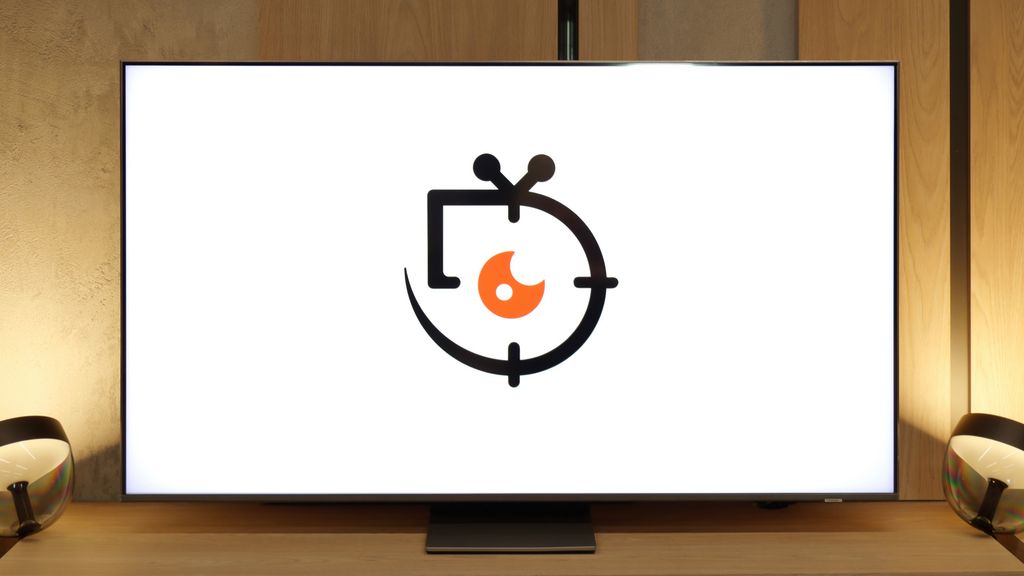
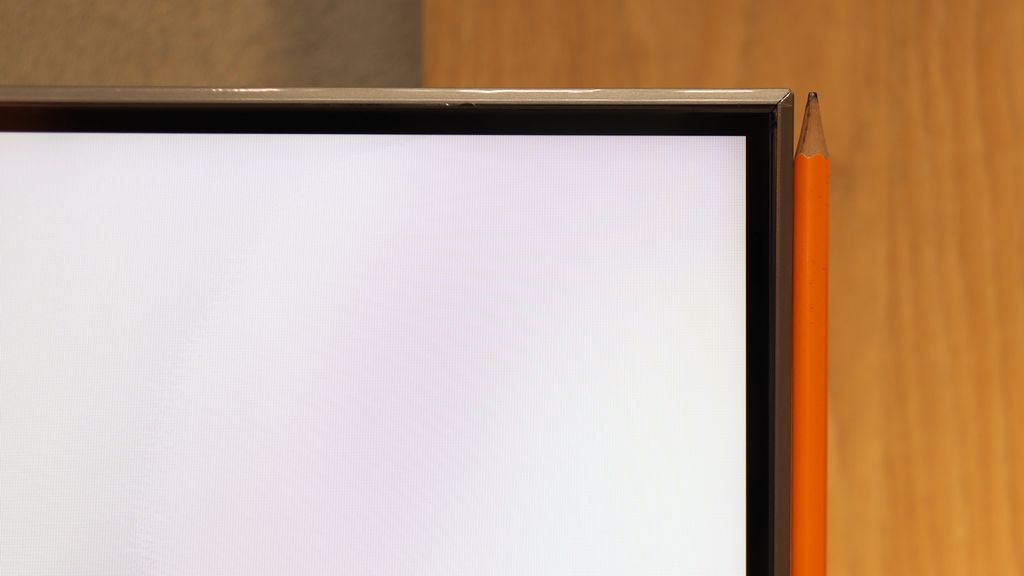
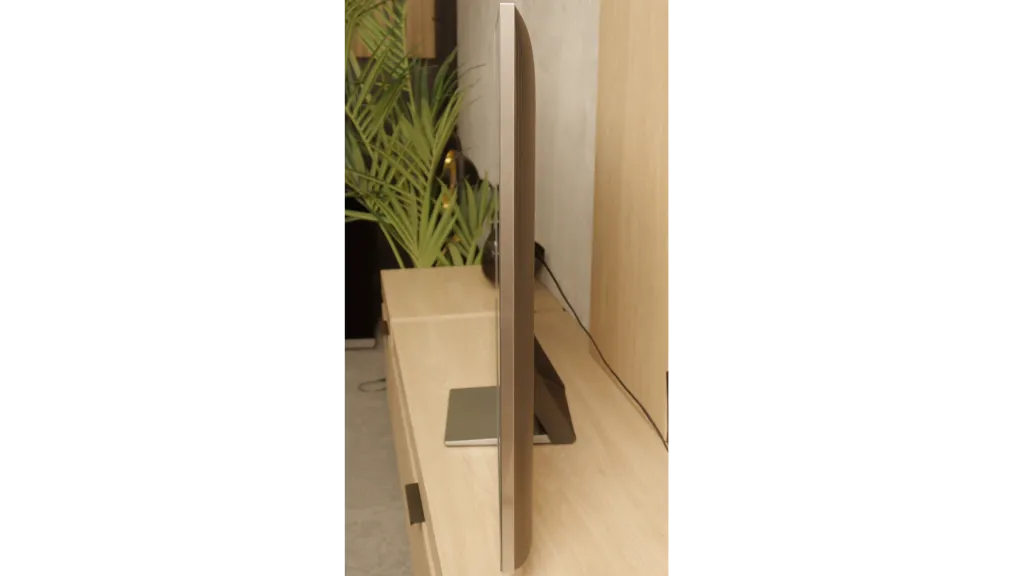
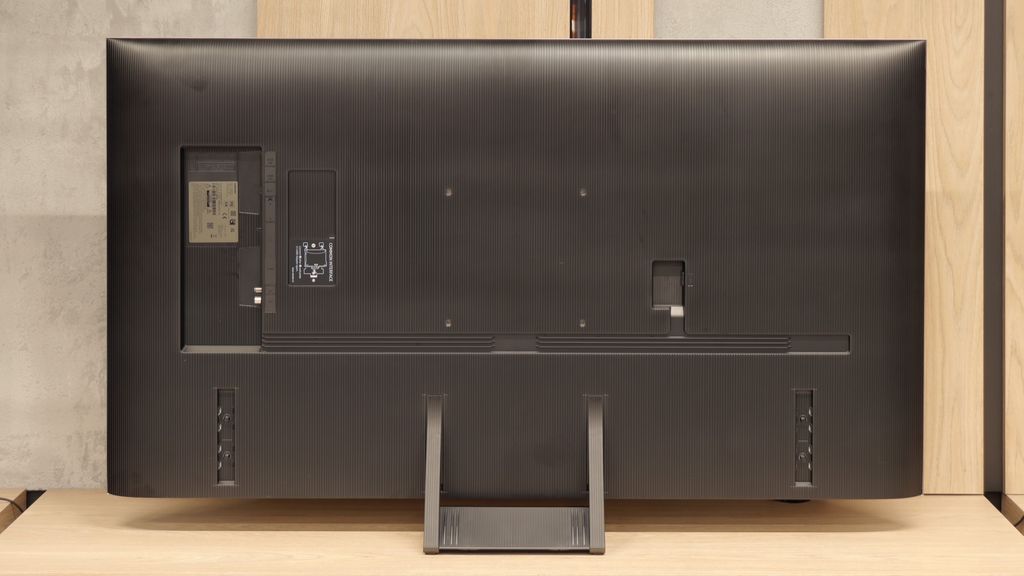
Contrast and black detail
5.6/10
7.5/10
Local dimming function: No
Local dimming function: Yes, number of zones: 240 (20 x 12)
Contrast:

Result
4,200:1

Result
4,800:1

Result
5,100:1

Result
5,300:1

Result
3,850:1

Result
101,800:1

Result
18,650:1

Result
47,050:1

Result
9,700:1

Result
4,350:1
Halo effect and black detail visibility:

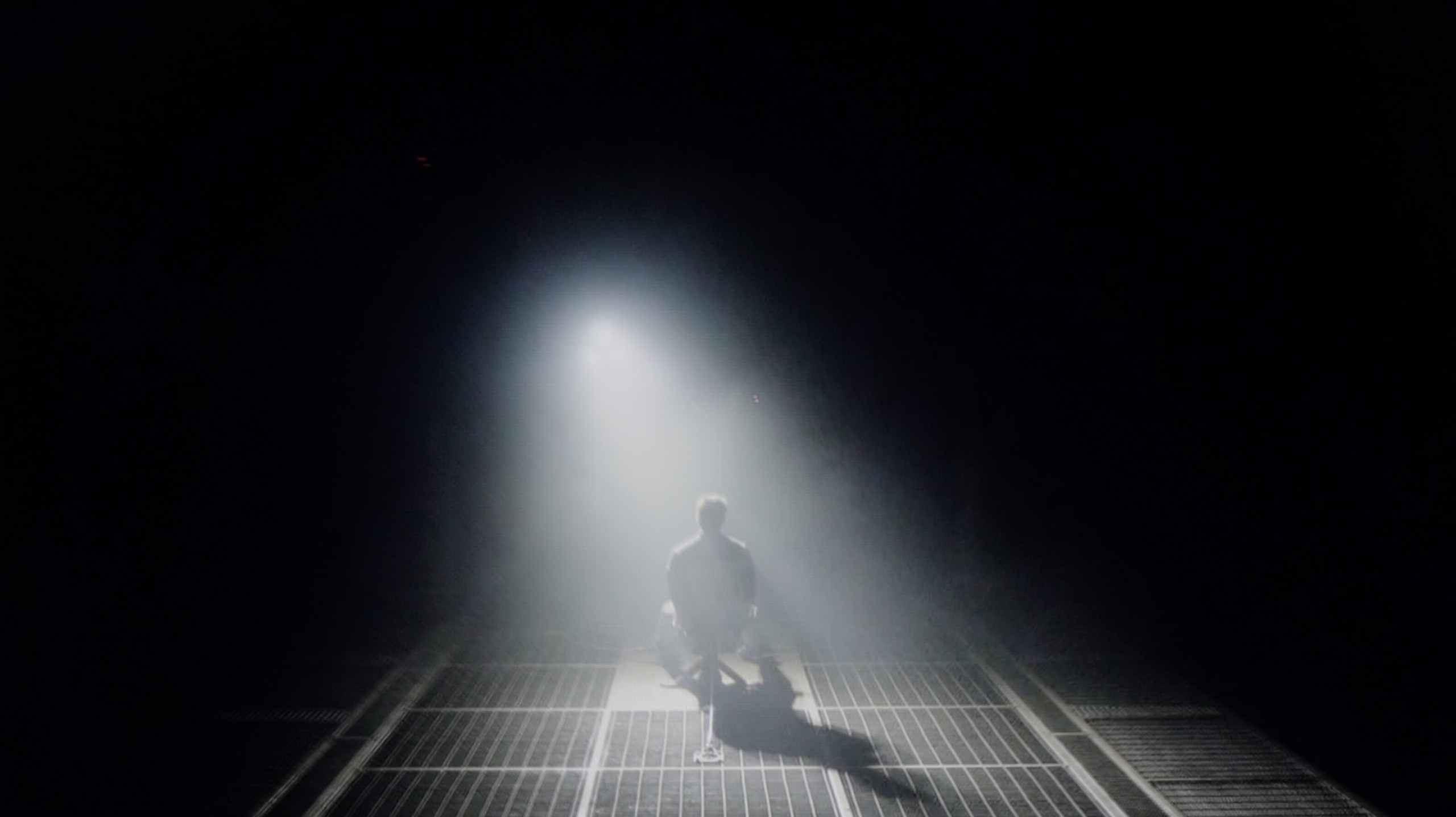
Samsung The Frame uses a VA panel, which provides quite a high contrast on its own. In our tests, the results ranged from 4000 to 5000:1, which will be perfectly sufficient for most users. However, the lack of local dimming becomes apparent, especially on more demanding test patterns. In dark scenes, it can be noticed that the black has a slight navy hue. During the day or in a well-lit room, this won't be a problem, but during an evening viewing, more demanding viewers may feel a slight dissatisfaction.
Our editorial team received a 55-inch model with a VA panel. In the case of NeoQLEDs, which are TVs with Mini-LED backlighting, size is crucial because the larger the screen, the more local dimming zones it can have. This directly translates to higher contrast. In the version we tested, we counted as many as 240 dimming zones, which is twice as many as last year's QN85D. Theoretically, such an increase should deliver an equally impressive improvement in contrast. Unfortunately, practice showed otherwise – the QN85F delivers results very close to its predecessor. Yes, in some scenes with a lot of black or in areas where details in highlights are crucial, there is a noticeable improvement, but it is not proportional to the number of zones. The Mini-LED technology can be temperamental, and sometimes delicate halos appear around small, bright objects. This is a typical compromise that one must accept with such a solution. However, this doesn’t change the fact that the contrast in the QN85F is at a very high level and will easily satisfy most users, even the more demanding ones. However, we have the impression that Samsung could fine-tune the algorithms controlling the dimming because we know from experience that they can perform really well in other models.
HDR effect quality
6.4/10
6.9/10
Luminance measurements in HDR:

Result
679 nit

Result
663 nit

Result
712 nit

Result
698 nit

Result
726 nit

Result
1248 nit

Result
860 nit

Result
1093 nit

Result
465 nit

Result
957 nit
Scene from the movie “Pan” (about 2800 nits)


Scene from the movie “Billy Lynn” (about 1100 nits)


Static HDR10


Dynamic: HDR10+
Dynamic: HDR10+


HDR luminance chart:
Samsung QN85F
HDR luminance
Samsung The Frame LS03D
HDR luminance
Samsung The Frame LS03D really does well with brightness. Results at the level of 700 nits make bright elements on the screen look impressive and detailed, whether they illuminate the entire screen or appear as tiny points of light on a dark background. In more demanding scenes, like the fourth sequence from the film Sicario 2, the blacks perform moderately, but we have already discussed this in the section on contrast. However, when it comes to brightness – this television definitely holds its own. An additional advantage is the quantum dot coating, which is QLED technology. Thanks to this, the coverage of the colour palette has been improved, although The Frame does not stand out in this regard compared to the competition.
Although more than twice the number of dimming zones compared to its predecessor did not result in a spectacular leap in black levels and contrast, we definitely felt it in the HDR effect itself. The QN85F is up to 50% brighter than last year's model and it makes a huge impression in dynamic scenes. Peak brightness can reach almost 1700–1800 nits, which is an impressively high result for this Mini-LED class. The best part is that almost regardless of the scene being watched, the HDR effect remains strong and vibrant. In four out of five test scenes, brightness was maintained around 1000 nits, a level that in most cases allows the viewer to feel the true magic of this format. Of course, in scene number 4 from the film Sicario 2, the limitations of Mini-LED technology become apparent – the brightness of the helicopter's subtle light drops to around 500 nits. This isn't an outstanding result, but it is still much more acceptable than last year's model. Samsung deserves applause for the dramatic improvement in brightness with the QN85F compared to its predecessor. However, there's a certain trend visible in this year's televisions – the manufacturer has worsened colour gamut coverage. Although the QN85F has a QLED panel, its result at around 90% DCI-P3 is average, and in the most demanding films, it may lead to less vibrant colours than its predecessor. Despite this drawback, the overall HDR effect is at an excellent level and truly makes a big impression in this class of devices.
Factory color reproduction
7/10
4.8/10


Factory Mode
After calibration


Factory Mode
After calibration
Samsung offers several picture modes in its televisions, but without a doubt, Filmmaker Mode is the one that should provide the most natural representation of content. Unfortunately, as often happens with mass production, the differences between individual units can be quite significant, and our tested model did not escape a few issues.
In the case of SDR content, the white balance leaned heavily towards red, with a slight boost in blue. This effect was particularly noticeable in comparison photos – for example, in a photograph of a boy whose face was unnaturally flushed. The gamma, or brightness characteristic, also did not perform perfectly – the image was slightly brightened, which robbed it of depth.
In 4K HDR content, the white balance was once again dominated by red, this time combined with green. Meanwhile, blue clearly lost intensity, which could easily be seen on the Color Checker palette, where the colours began to "escape" in the wrong direction. The EOTF curve, responsible for brightness in HDR content, showed that the television tended to overly brighten the image, particularly in the darkest elements of scenes.
Overall, while it did not look terrible, it definitely required correction. Fortunately, Samsung offers extensive calibration options, which provides a chance for a significant improvement in picture quality. Therefore, we proceeded with professional calibration to unlock the full potential of this television.
Samsung QN85F offers several preset picture modes, but out of the box, the television starts in 'Eco' mode. We could almost end the discussion here, as using this setting on such a model makes little sense – the picture is washed out, unpleasant, and far from what we expect from a television of this class. Therefore, we conducted our tests in the best available mode, which is Filmmaker mode. Its purpose is to faithfully reproduce what the directors saw during filming, and indeed, it is the setting that performs best among all factory options. However, this doesn't mean it's free from flaws.
Both in SDR and HDR, the QN85F prominently highlighted warm colours. This was due to a lack of white balance, where the blue colour was noticeably absent. Additionally, the image was sometimes overexposed – both the gamma brightness characteristic and the EOTF curve indicated that the television has a tendency to blow out scenes. In SDR, colour reproduction errors (Delta E around 4–5) were still acceptable, but in HDR, the inaccuracies became quite significant and clearly deviated from what the creators intended to show us. Fortunately, Samsung provides a wide range of calibration tools in its televisions, so – as always – we proceeded with professional calibration to see how much could be improved.
Color reproduction after calibration
8.1/10
8.5/10




After professional calibration, the Filmmaker Mode showcases its full potential. The white balance in HD content is exemplary – errors at the level of 0.5 indicate almost perfect accuracy in colour reproduction. The image now appears natural, and the colours are exactly as they should be. In 4K HDR content, the effect is not quite as perfect, but it still maintains a really high standard. The colours are vibrant, well-saturated, and the overall image quality is impressive.
So where does the problem lie, given our praise for the colour reproduction? Unfortunately, the entire experience is disrupted by the brightness characteristics. The gamma in HD content looks decent, but in 4K HDR, it’s not as good. The EOTF curve shows that the television excessively brightens certain parts of the image, which is a result of design limitations. The lack of local dimming means that the television is unable to accurately control the differences between the brightest and darkest areas of the screen. This is a barrier that simply cannot be overcome in this model.
Nonetheless, after calibration, Samsung The Frame LS03D offers excellent colour reproduction, particularly in HD content, and the overall look is significantly better than before the settings were adjusted.
After calibrating the movie mode, we managed to tame the colours in both modes almost to perfection – most of them did not exceed an error value of 3, which is the threshold of perceivability by the human eye. The image became more natural, fuller, and at the same time free of the overexposure that was noticeable right after taking the television out of the box. This demonstrates the significant potential that lies within the QN85F and how well it responds to precise settings. However, this does not change the fact that certain technological barriers cannot be overcome. Despite the enormous benefits of calibration, there are still limitations to the panel itself. Although the number of dimming zones has doubled compared to its predecessor, the algorithms controlling the backlighting can manipulate brightness in their own way. Sometimes this leads to slight colour inaccuracies or subtly visible halo effects around bright objects. Nonetheless, the viewing experience after calibration is really enjoyable and shows how good a screen the QN85F can be if we just take a moment for the right settings.
Smoothness of tonal transitions
9.7/10
9/10

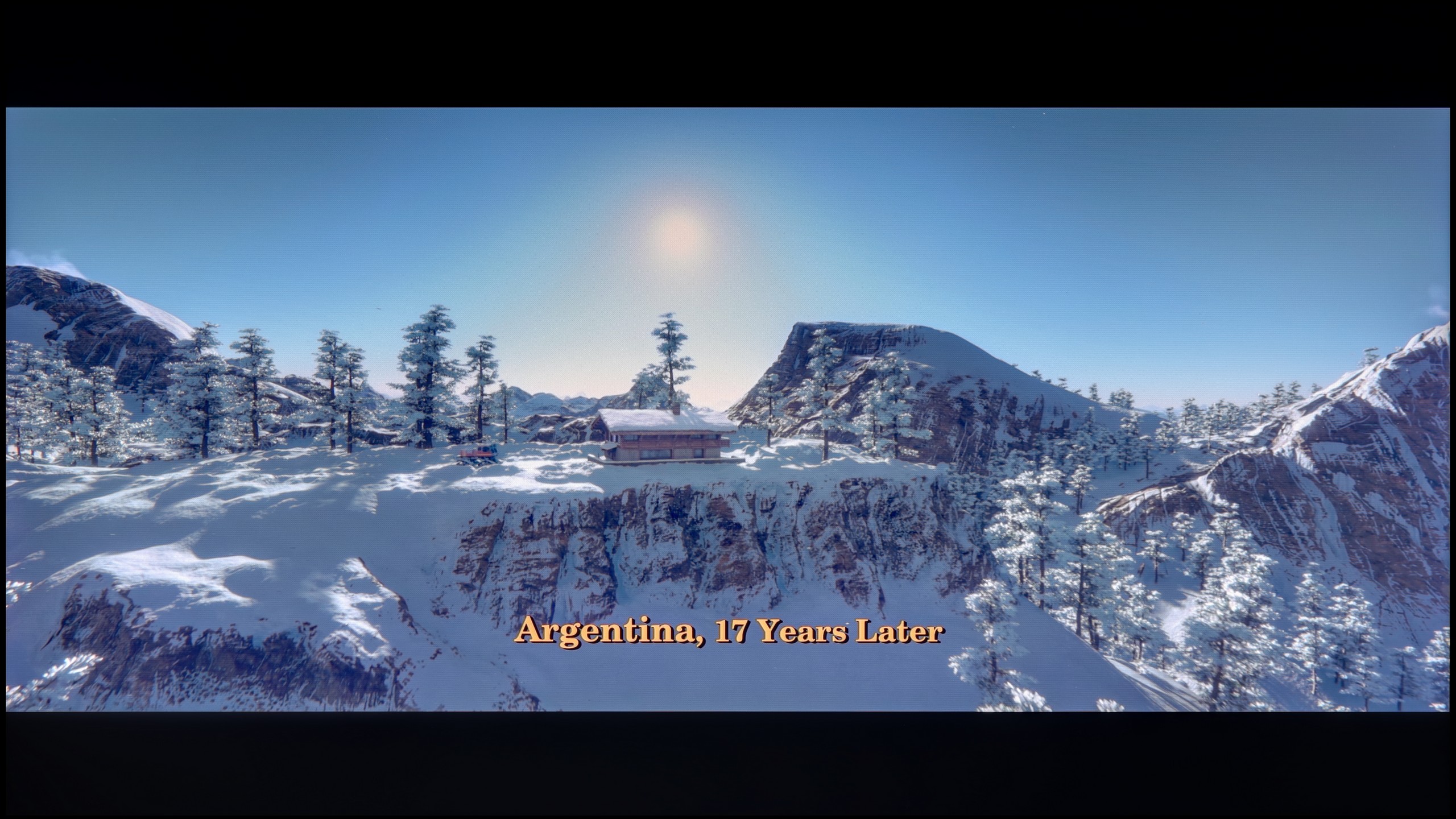










This is one of the best televisions we've had the opportunity to test in terms of the smoothness of tonal transitions. Any potential imperfections are so minor that you really have to strain your eyes to notice them. They are subtle enough that we only deducted a symbolic fraction of points in this category. Undoubtedly, this is one of the greatest advantages of this model. It's possible that such a good effect is partly due to the matte screen coating, which gently masks any irregularities in colour gradation. The smoothness of tonal transitions in Samsung The Frame LS03D is at a level that will satisfy even exceptionally demanding users. Kudos to LS03D!
Minor colour errors are often practically unnoticeable; it is the fluidity of tonal transitions that is a category that even a less experienced viewer will pay attention to. Unfortunate stripes and artificial lines can completely ruin the perception of the image. Fortunately, the QN85F handles this aspect almost perfectly. Gradients are smooth, transitions between colours are seamless, and no artificial lines or distinct boundaries separating hues appear on the screen. The image remains consistent, and nothing distracts our attention from the content. Only in very extreme conditions did we notice slight issues in the grey palette, but this is a flaw typical of most televisions and it's hard to consider it a serious drawback. In practice, while watching films, we encountered no problems.
Image scaling and smoothness of tonal transitions
7.1/10
7.5/10
Smooth transition function

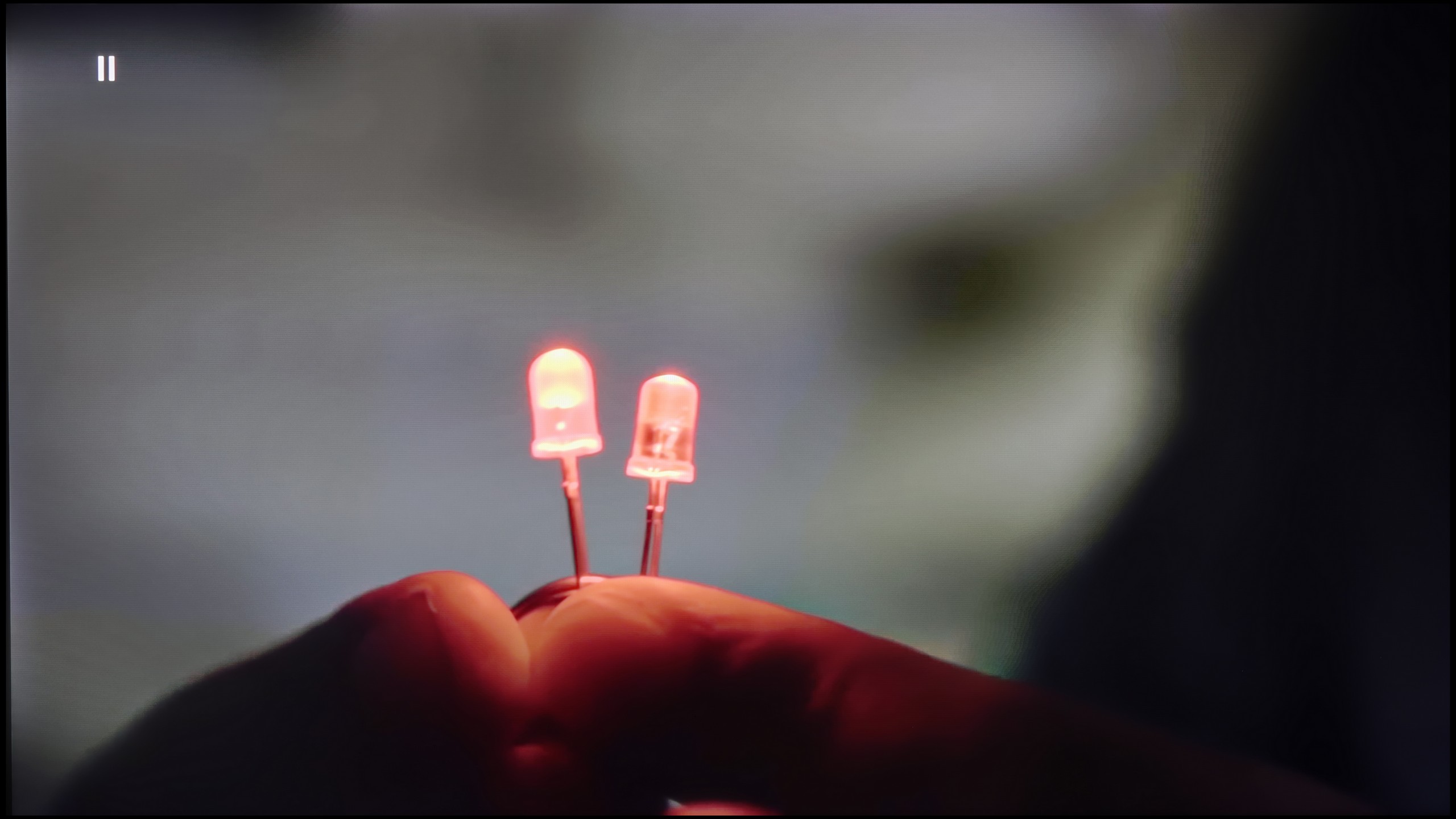
Image without overscan on the SD signal

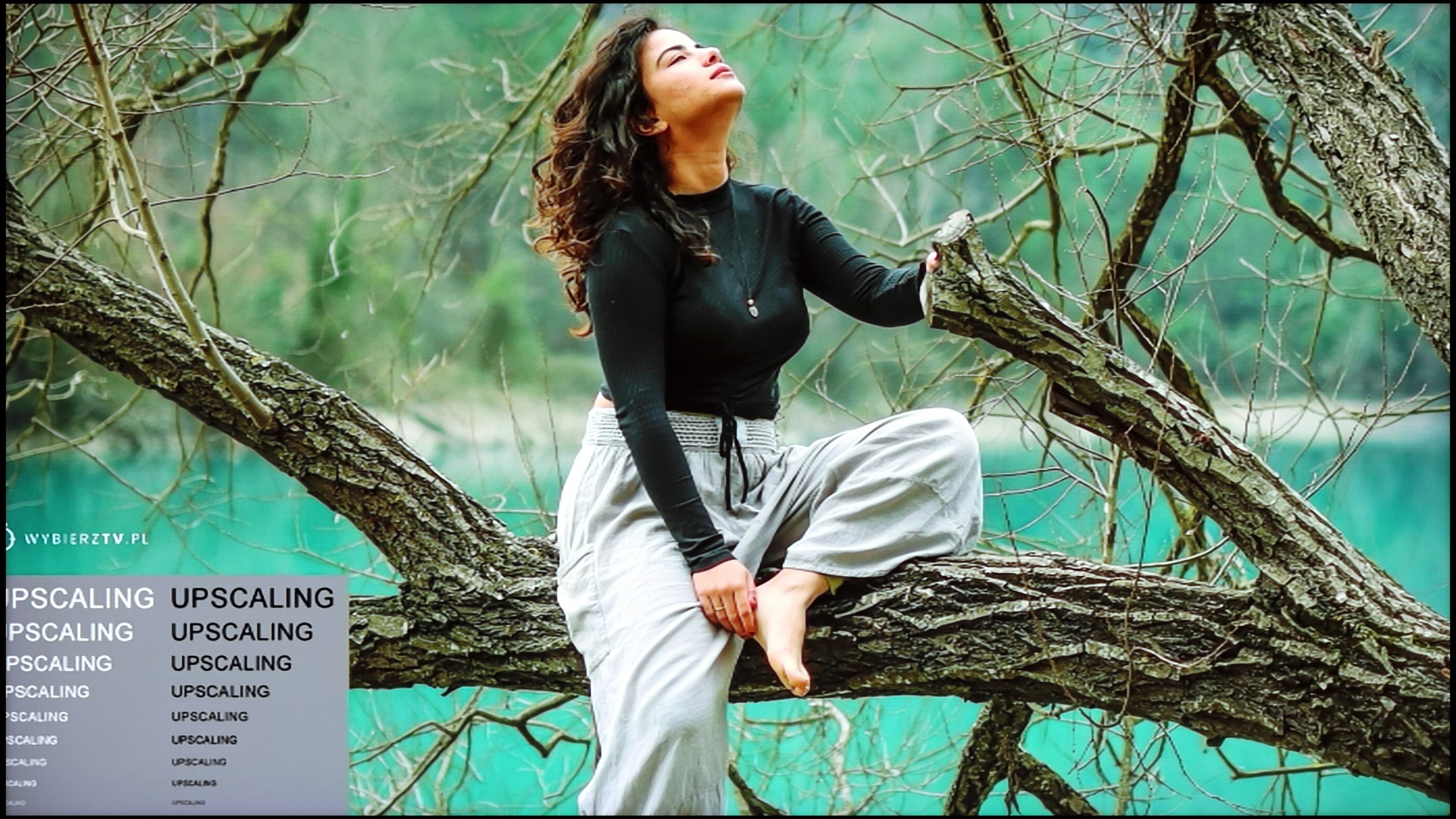
It's time to check how Samsung The Frame LS03D copes with older, lower-quality materials. We already know that the smoothness of tonal transitions is at a very high level, so we were curious to see how the TV would handle smoothing them out.
The noise reduction feature in the “Standard” setting does its job well – tonal transitions are noticeably smoothed out, and the image doesn’t lose too much detail. However, it’s worth noting that this effect also smooths out film grain, so its usage will be a matter of individual preference.
When it comes to image scaling, the TV performed really well too. The tested image came out solid – the model was accurately represented, with clear details. The branches in the background, although slightly frayed in places, generally look natural and do not stand out as a flaw.
Although the native tonal transitions on the QN85F perform excellently with 4K content, we don't always have to deal with the highest resolution material. This is where how the TV handles upscaling and digital image processing becomes crucial. This process is managed by Samsung's proprietary processor – AI NQ4 Gen2. In practice, it works very effectively. If visible colour banding or other undesirable phenomena appear on the screen, for instance with content from YouTube, they can easily be smoothed out using the "noise reduction" feature. Set to medium, it improves tonal transitions while not overly blurring desired details. However, it should be noted that – like in most Samsung TVs – this feature heavily interferes with film grain. Therefore, during movie screenings, it’s wise to use it cautiously to avoid losing the natural character of the image.
The upscaling itself looks very good. Test materials in lower resolutions were displayed sharply and clearly, with a lot of details. The only drawback remains the issue with overscan, which cuts off the edges of the screen. In most situations, this isn't noticeable, but with very old materials below HD quality, there may be instances where a fragment of the image from the left side gets slightly cut off.
Blur and motion smoothness
6.4/10
7.7/10

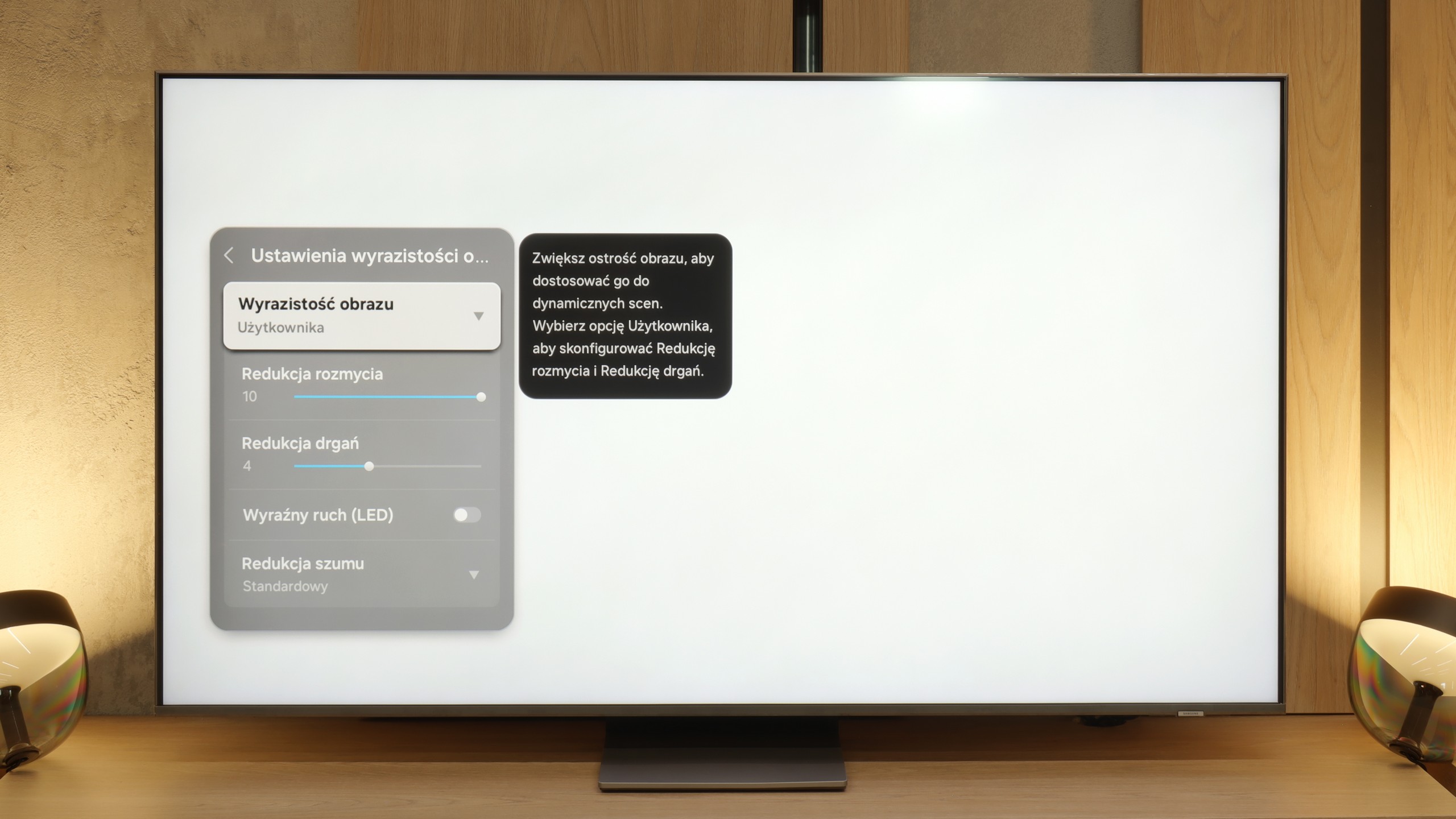
Blur (native resolution, maximum refresh rate):



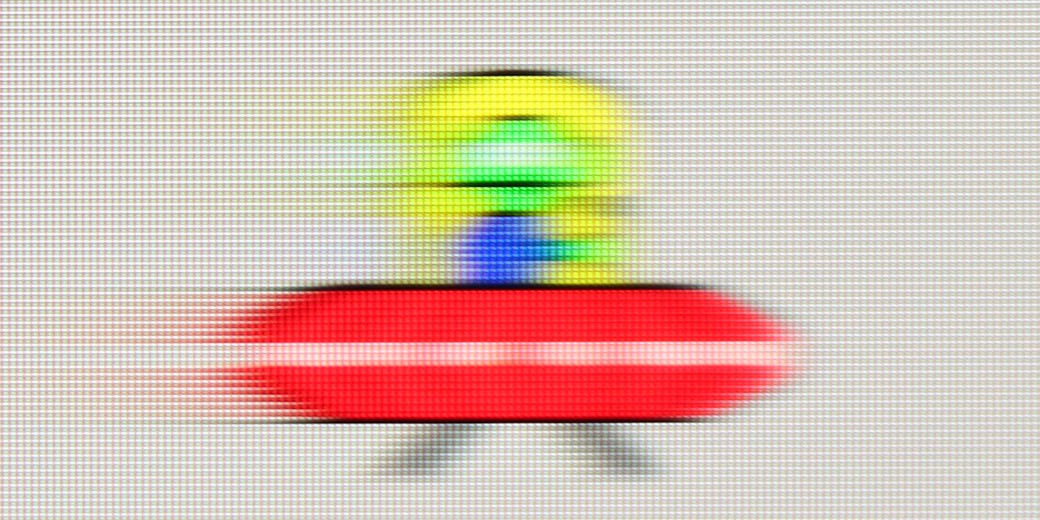
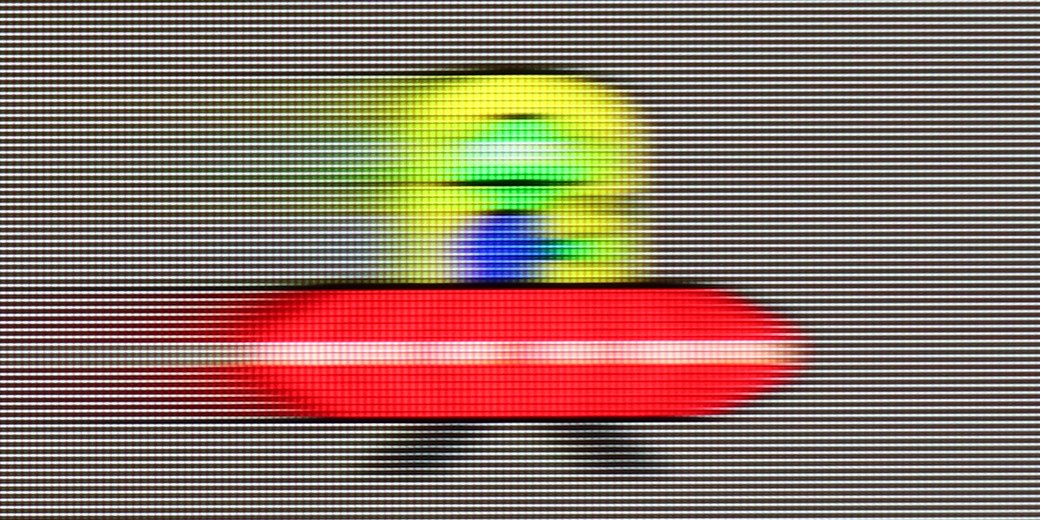
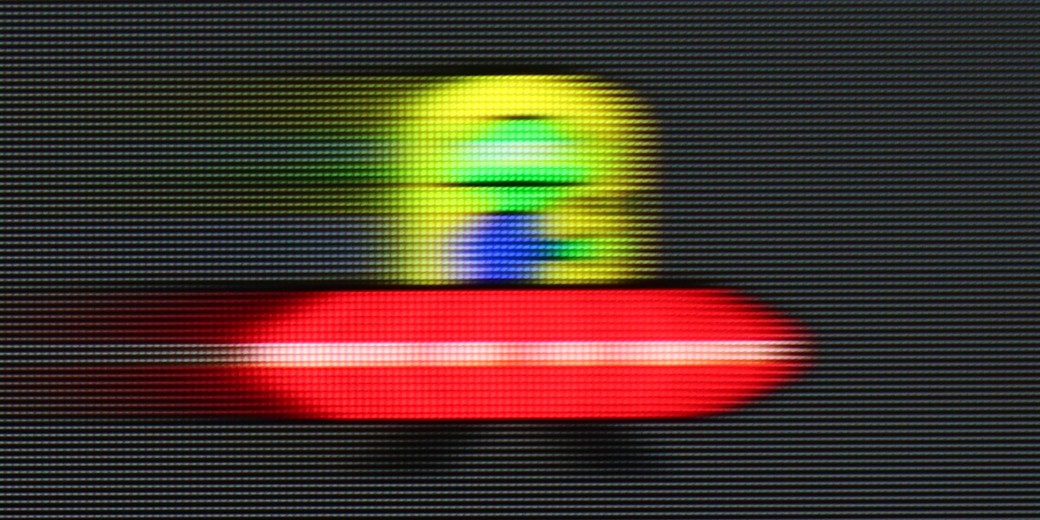
Blur (BFI function enabled):
Image flickers in this mode
Image flickers in this mode



Smużenie ():
Smużenie (4K@144Hz):
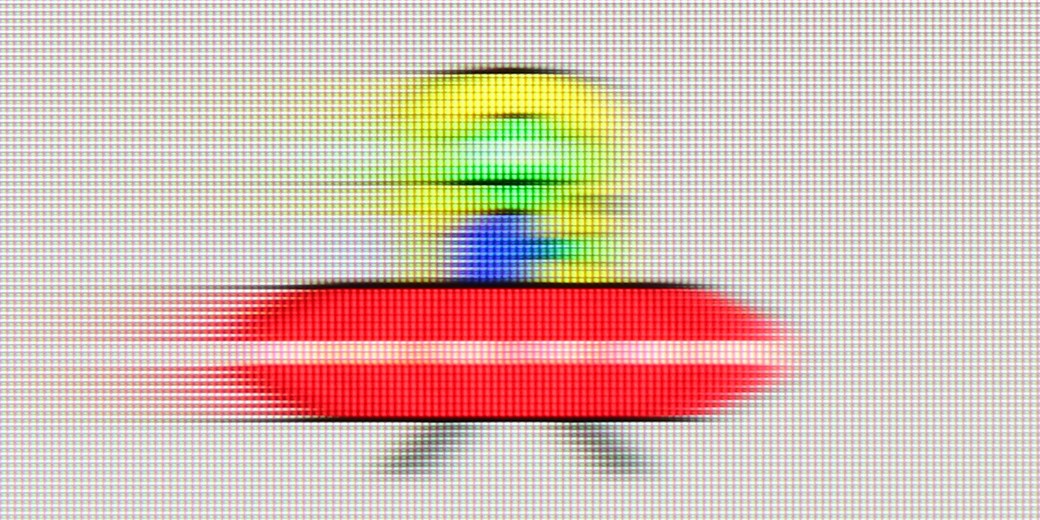
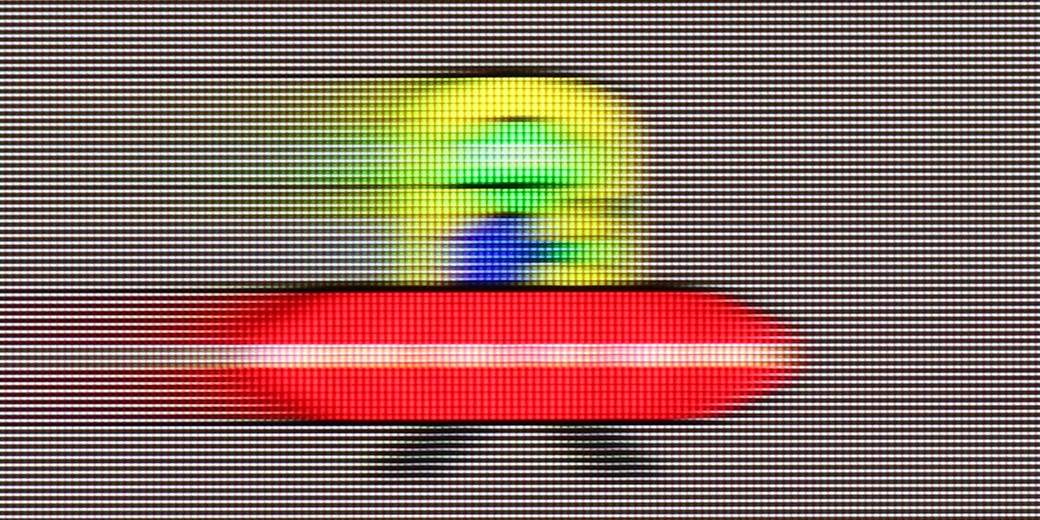
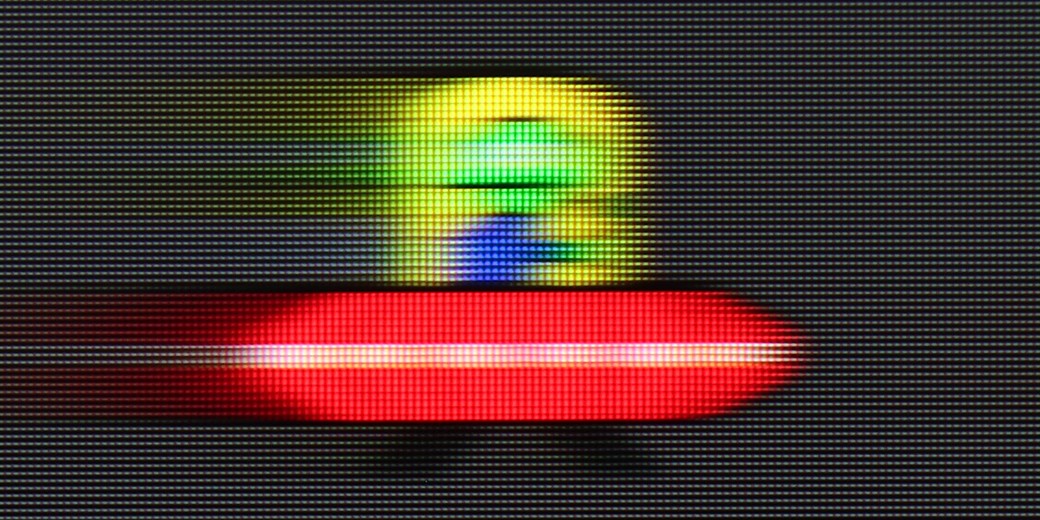
To start off, it’s worth noting that the model we tested in the 55-inch size, along with the 65, 75, and 85-inch versions, is equipped with a 120 Hz panel. Unfortunately, the 43 and 50-inch variants of this series only offer 60 Hz panels, which is worth considering when making a purchase. In terms of improving motion fluidity, the TV offers a feature called “Image Clarity.” This is a classic motion smoother that gives users the ability to adjust using two sliders:
Blur Reduction – this controls image sharpening during dynamic scenes. The higher the value, the less blurring occurs during fast camera moves or moving objects. However, setting it too aggressively can make the image look unnatural and resemble a “soap opera.”
Judder Reduction – this slider affects the smoothness of frame playback, especially in materials with lower frame rates, such as movies (24 fps). Higher settings can smooth out motion but can also lead to excessive “plasticity” of the image.
Both sliders operate on a scale from 0 to 10, allowing for precise adjustment of the effect to personal preferences. It’s a good idea to experiment with the settings to find the perfect balance between fluidity and a natural look for the image. We recommend setting them as shown in the picture.
Motion blur and fluidity of movement in the QN85F is a topic worth discussing further because the TV is equipped not with a standard 120 Hz panel but with a 144 Hz one. The extra hertz will mainly be appreciated by PC gamers, but the very fact of having such an option can be seen as a nice addition and a sign of the times – it's hard to complain about the trend of faster panels since in practice, each of us would like the picture to be as smooth as possible. However, the most important thing is how the TV performs with typical 120 Hz refresh rates – in the case of consoles, sports, or films recorded at 24 or 30 frames per second. And here, the QN85F performs really well. In films, you can easily adjust the character of the picture thanks to the "image clarity" feature, where you'll find two control sliders. Key in the case of screenings is the one responsible for reducing motion judder. Lower values give the image a more cinematic character with preserved "frame-ness," while higher values lead to strong smoothing, reminiscent of television theatre.
Console compatibility and gaming features
8.8/10
8.2/10
- ALLM
- VRR
- VRR range48 - 120Hz48 - 144Hz
- Dolby Vision Game Mode
- Correct implementation of HGIG
- 1080p@120Hz
- 1440p@120Hz
- 4K@120Hz
- Game bar

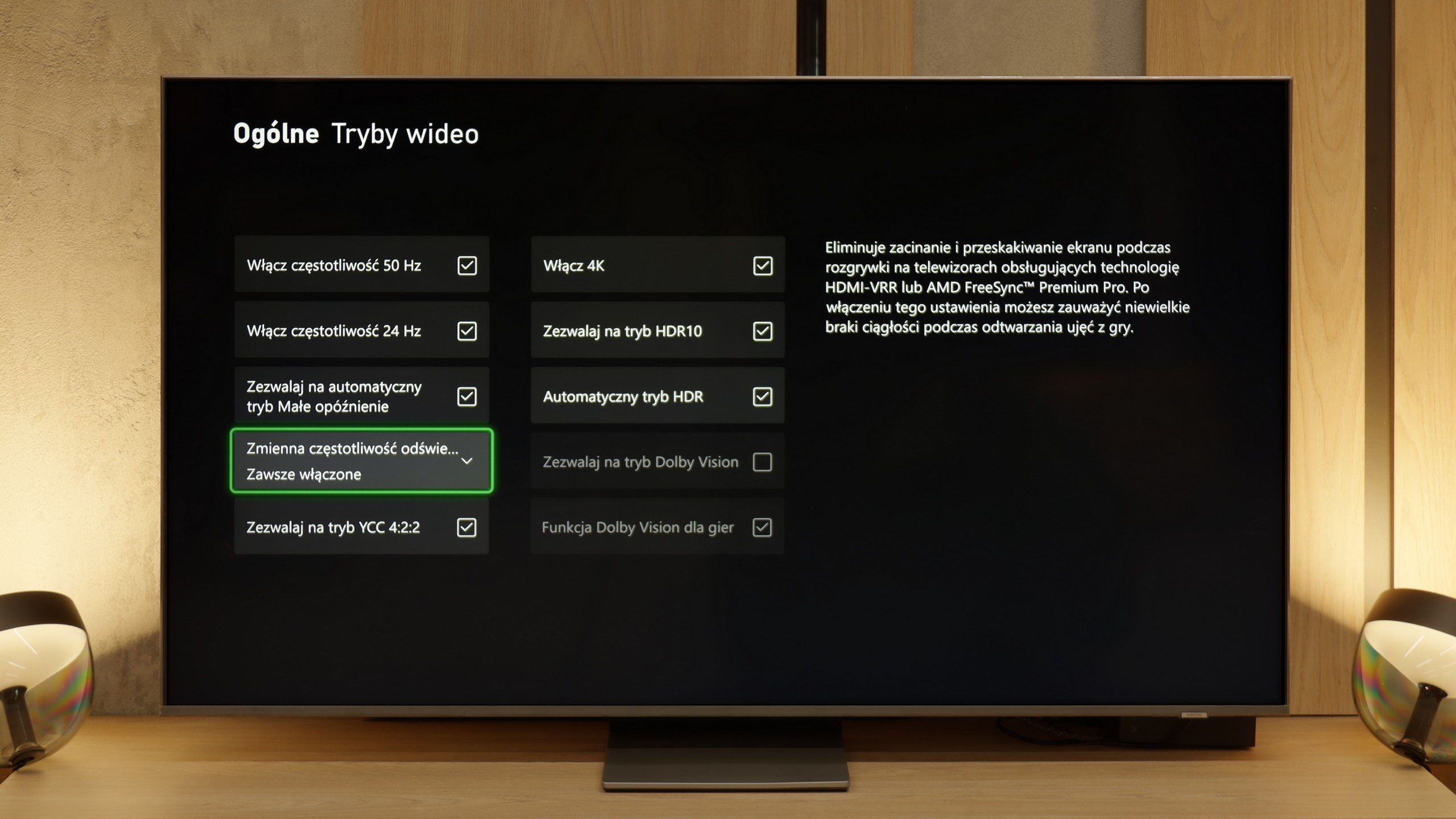

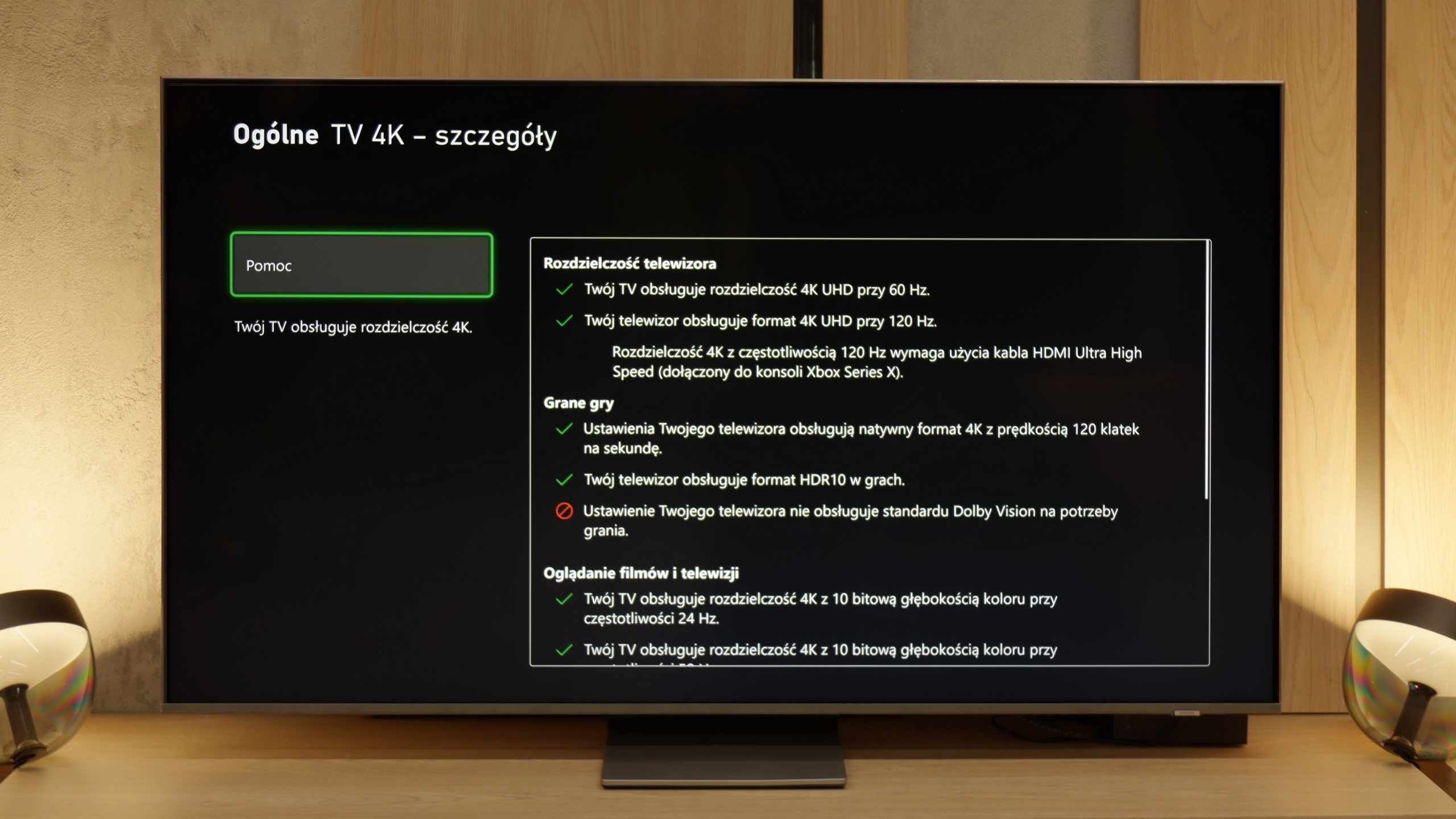

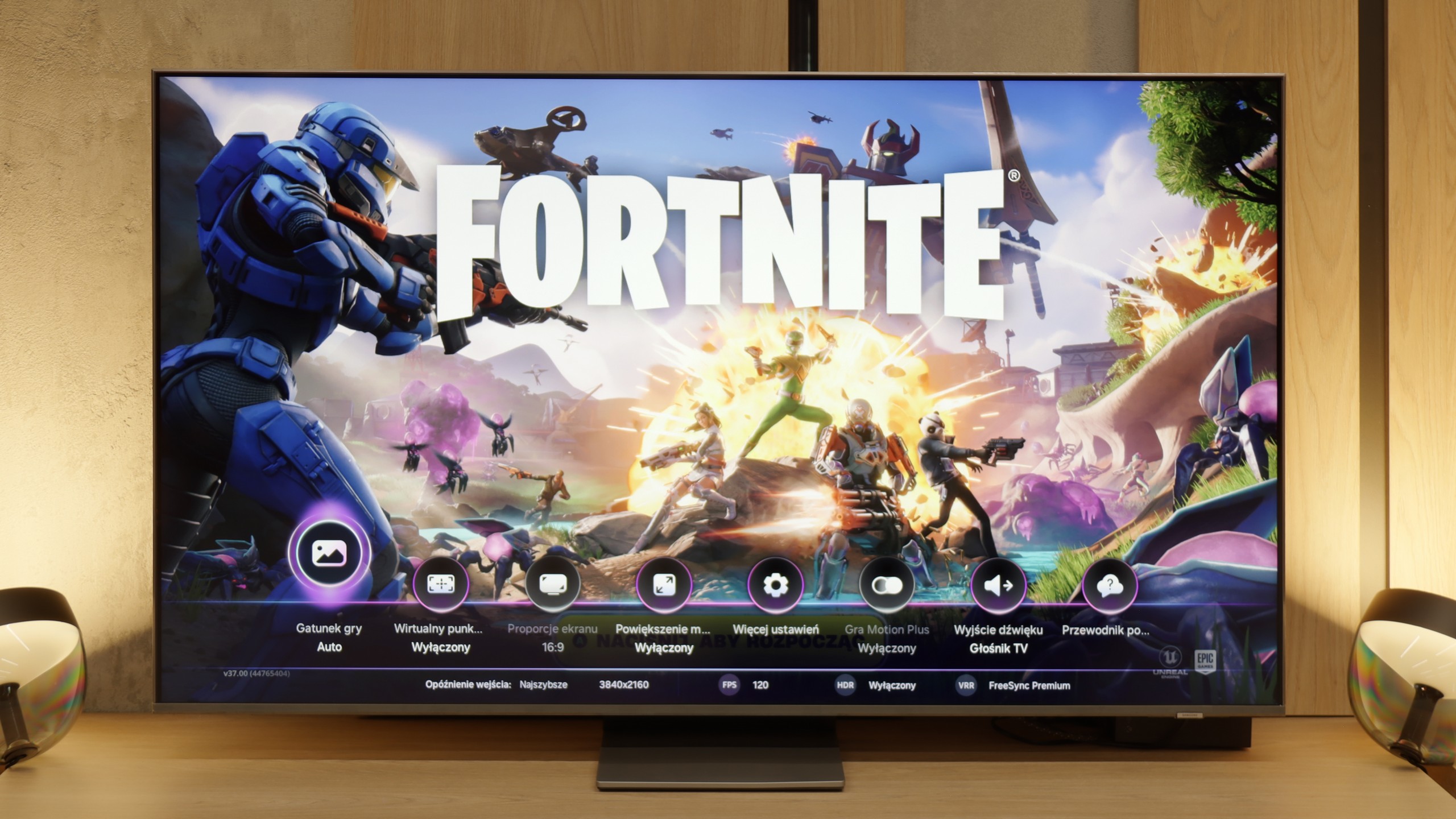

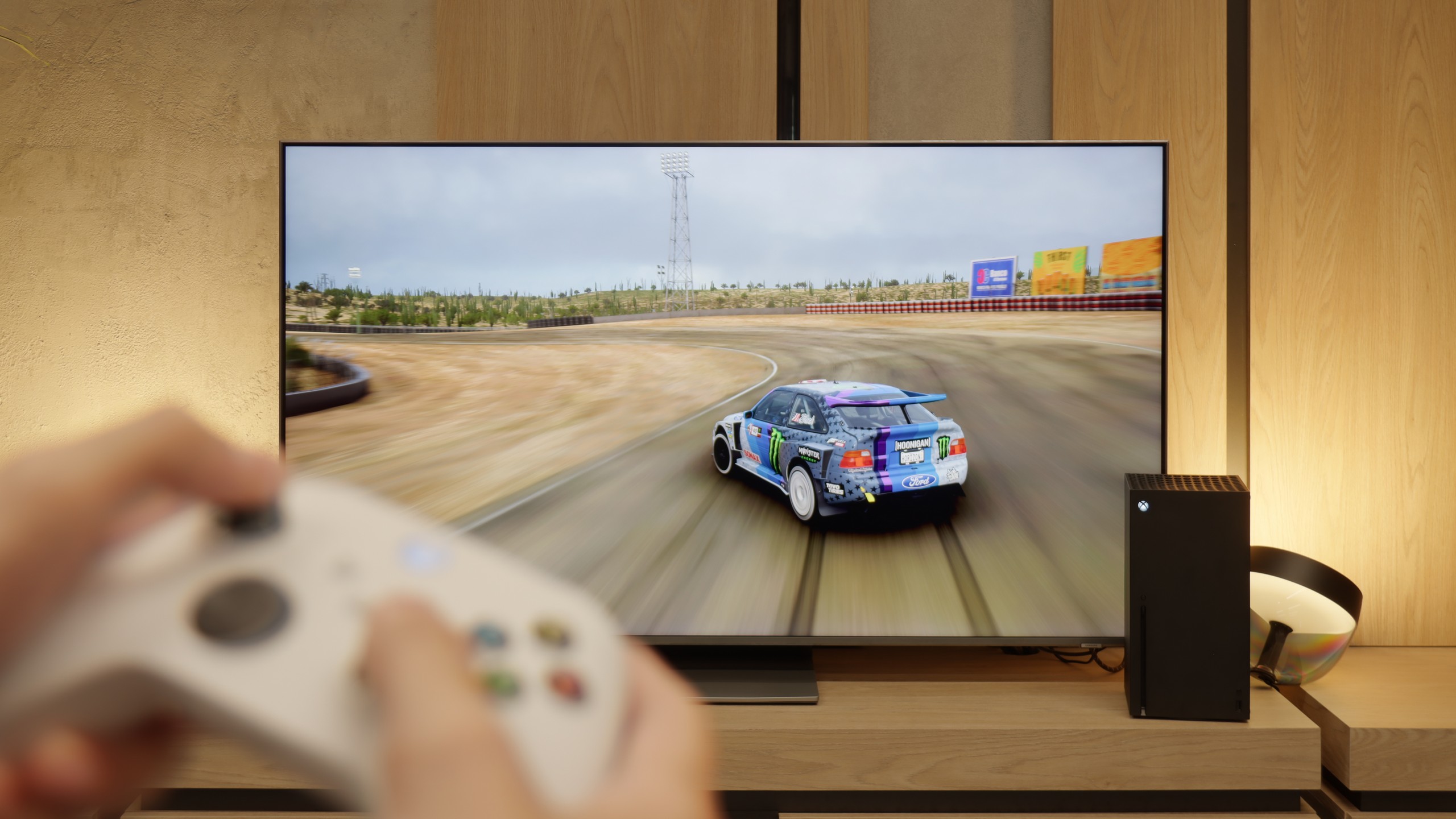
The Frame LS03D in the 2024 version is equipped with four HDMI ports, but only one supports the 2.1 standard with a bandwidth of 40 Gb/s. This is important information if we plan to connect more than one device that requires a 4K@120 Hz signal – for example, two consoles or a console and a gaming PC.
In terms of features for gamers, The Frame truly has a lot to boast about. We have ALLM (Auto Low Latency Mode), VRR (Variable Refresh Rate) and HGiG. It’s worth mentioning that HGiG has been very well implemented here, which is particularly important as the television does not support Dolby Vision in games (which is only available on Xbox consoles). In this case, HGiG turns out to be a better standard for gaming.
Samsung hasn't forgotten about features that enhance the gaming experience. Game Bar is an expanded panel for gamers that allows quick adjustment of screen settings without having to dig through the television menu. We can even change the aspect ratio from 16:9 to the panoramic 21:9, which can be a significant advantage for some gamers.
However, Samsung's biggest ace up its sleeve is the Game Motion Plus feature. This is a special smoother dedicated to games that adds additional frames of animation without significantly affecting input lag. The effect is really noticeable – the image seems much smoother, which will be particularly appreciated by fans of dynamic titles.
In summary – Samsung The Frame LS03D is a television that offers a solid set of features for gamers. Although the limitation to one HDMI 2.1 port may be a downside, the rest of the solutions make gaming on this television a truly enjoyable experience.
The Samsung QN85F makes a fantastic impression from a gamer’s perspective. It features four HDMI 2.1 ports, so we can easily connect multiple devices at the same time. There’s also Variable Refresh Rate (VRR) to prevent screen tearing, as well as Auto Low Latency Mode (ALLM), which allows the TV to automatically switch to the appropriate settings when we start the console. Additionally, it supports refresh rates of up to 144 Hz – something that PC gamers will particularly appreciate, but the mere fact that this option is available shows that Samsung is committed to full support for gamers. The Game Bar panel also deserves praise. It provides a quick overview of key parameters – from frame rates to refresh mode, and even shortcuts to picture settings. Instead of sifting through the entire menu, everything is at our fingertips, which proves to be really convenient in practice. However, the most interesting addition is the Game Motion Plus feature. It’s essentially a motion smoothing function, brought into the gaming world. When activated, the picture becomes smoother, sometimes it even looks like we’ve gotten a few extra frames, and importantly – the response delay doesn’t increase enough to hinder gameplay. This solution truly sets Samsung’s 120Hz TVs apart from the competition.
The only serious downside remains the lack of proper HGiG support. This standard is responsible for accurate tone mapping in HDR games, which ensures that brightness and contrast are displayed according to how creators intended. Without HGiG, we have to manually adjust brightness, which doesn’t always yield perfect results. The feature was available in previous models, but it disappeared from the QN85F after one of the updates. We hope that Samsung will quickly rectify this issue, and we will be keeping an eye on whether they succeed.
Input lag
10/10
9.8/10
SDR
HDR
Dolby Vision
When it comes to latency, The Frame LS03D truly impresses. 13 ms with 60 Hz content and 8 ms at 120 Hz are results that will satisfy even the most demanding gamers. Such low values make the reactions to controller movements almost instantaneous. In dynamic games like shooters or racing, every fraction of a second counts – here, Samsung LS03D performs superbly.
The input lag in the QN85F is exceptionally high. With content at 120 or 144 Hz, the values often hovered below 10 ms, which is an outstanding result. Naturally, when playing at 60 Hz, the lag doubles, but it still remains low enough to be practically unnoticeable. This makes the QN85F suitable for both dynamic e-sports games and more relaxed console titles.
Compatibility with PC
7.6/10
8.4/10

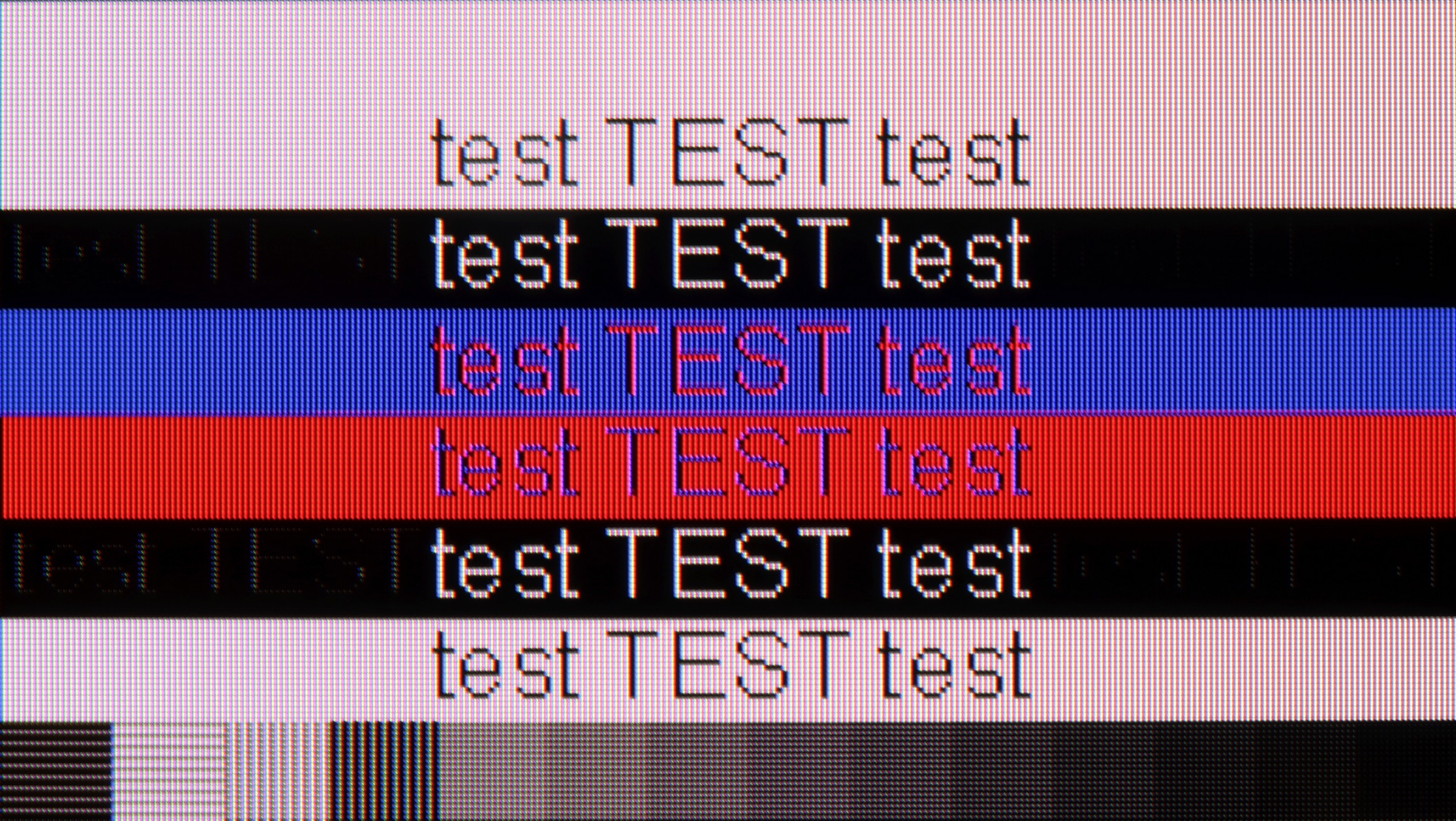
Using a computer on The Frame is truly a pleasant experience. The fonts are clear and well-reproduced thanks to the 4:4:4 chroma support. There's no blurring or fuzziness that often occurs in cheaper TVs. Of course, if someone is really scrutinising small texts, they might notice minimal imperfections, but that’s really a minor issue that doesn’t interfere with daily tasks. It's also suitable for gaming on PC. The 120 Hz panel, support for G-Sync, and really low input lag ensure that games run smoothly and without delays.
The QN85F performs really well in terms of collaboration with computers. Thanks to the PC mode with a refresh rate of up to 144 Hz, support for G-Sync, and low input lag, gaming on a personal computer is very enjoyable and should not cause frustration even for more demanding gamers. The readability of the fonts is also good – the TV supports 4:4:4 chroma, so standard texts look sharp and clear. The problem only arises with very thin letters. Regardless of the refresh rate setting – whether it’s 144, 120, or 60 Hz – horizontal, thin lines were poorly visible. Reducing the refresh rate slightly improved the situation, but never to the point where one could say they were displayed perfectly.
Viewing angles
3.3/10
3.2/10
The viewing angles on the Samsung The Frame LS03D are average, which is typical for a VA panel. And here lies a bit of a hitch – this television is supposed to serve as a display for images and artworks, which are not always viewed straight on. When viewed at an angle, colours begin to lose their intensity, and blacks turn into shades of grey. It isn’t a level that completely ruins the viewing experience, but if the television is set up in a spot where it will often be watched from the side, the effect may be noticeable. It’s a shame, because better viewing angles in a television designed for such a purpose would be a great advantage.
The viewing angles on the QN85F are the classic Achilles' heel of most LCD TVs with VA panels. When looking at the screen from an angle, the drop in brightness becomes apparent quite quickly, with whites starting to grey and colours losing their intensity. This is the price to pay for the high contrast that this technology offers. Samsung could have opted for a better coating to enhance viewing angles in this model, but it is not present here. In practice, this means that the best viewing experience will be obtained when sitting directly in front of the television, and any significant deviation will result in a noticeable loss of picture quality.
TV efficiency during daytime
6.5/10
6.9/10

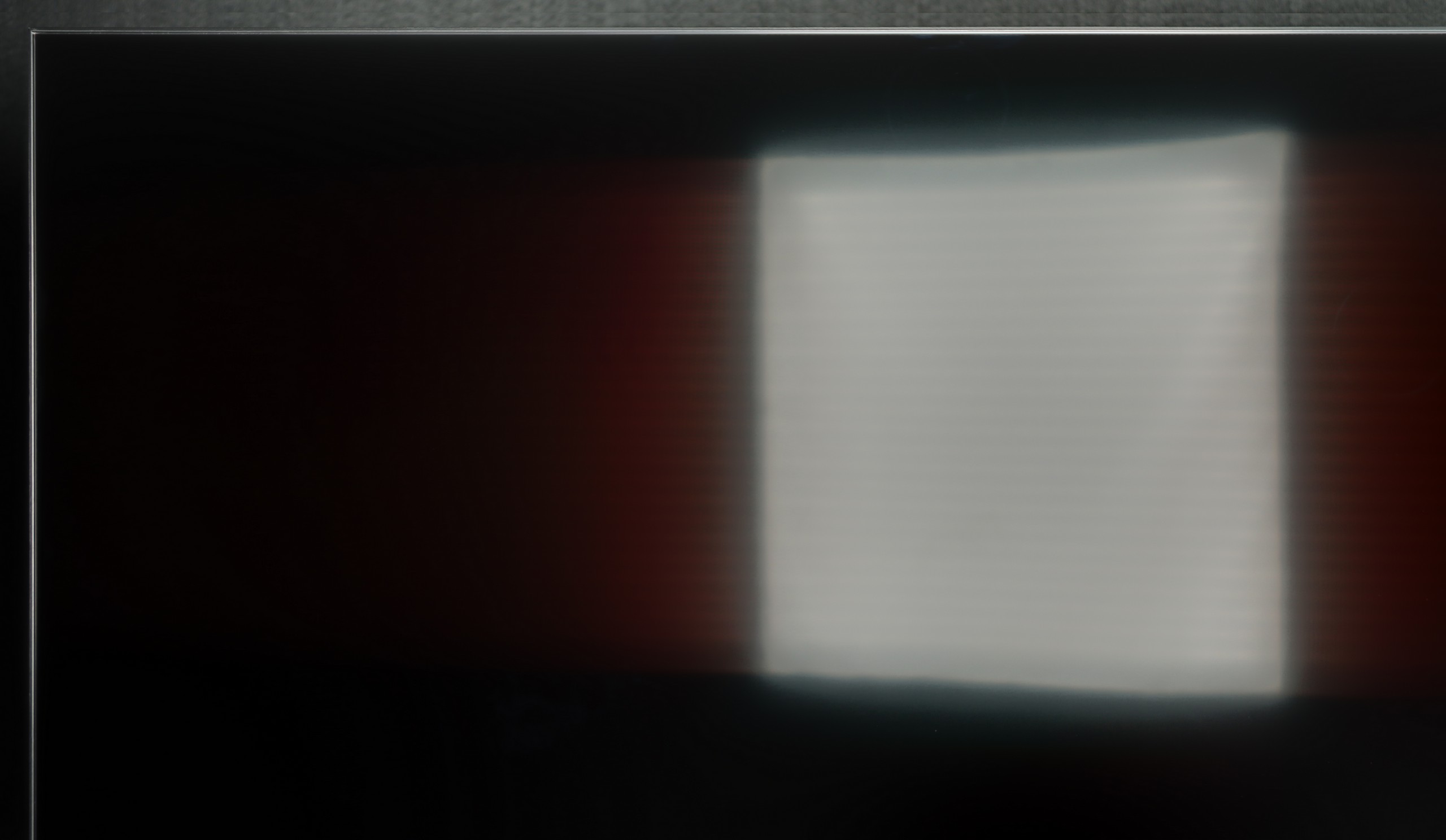


Matrix brightness
Average luminance SDR
Samsung QN85F : 690 cd/m2
Samsung The Frame LS03D : 645 cd/m2
Samsung The Frame has been equipped with a matte panel that effectively manages to reduce direct light reflections. This means that even in a brightly lit room, the image remains clear, and reflections do not interfere with viewing. Of course, as is often the case with matte finishes, there are trade-offs – colours lose some of their intensity, and black appears more washed out during the day. Fortunately, the television compensates for this with a brightness level of 650 cd/m². This ensures that the image is bright, sharp, and easily visible even in a well-lit room.
QN85F performs exceptionally well during the day. The satin finish of the screen combined with high brightness makes it a television designed for bright rooms. Colours do not lose their intensity, and the image does not wash out even when a lot of light floods in. The television itself is bright enough to handle a lounge with large windows facing south. Therefore, the QN85F gives us an image that allows us to watch movies or matches during the day without annoying reflections and the feeling that the picture disappears in the sunlight.
Details about the matrix
Subpixel Structure:

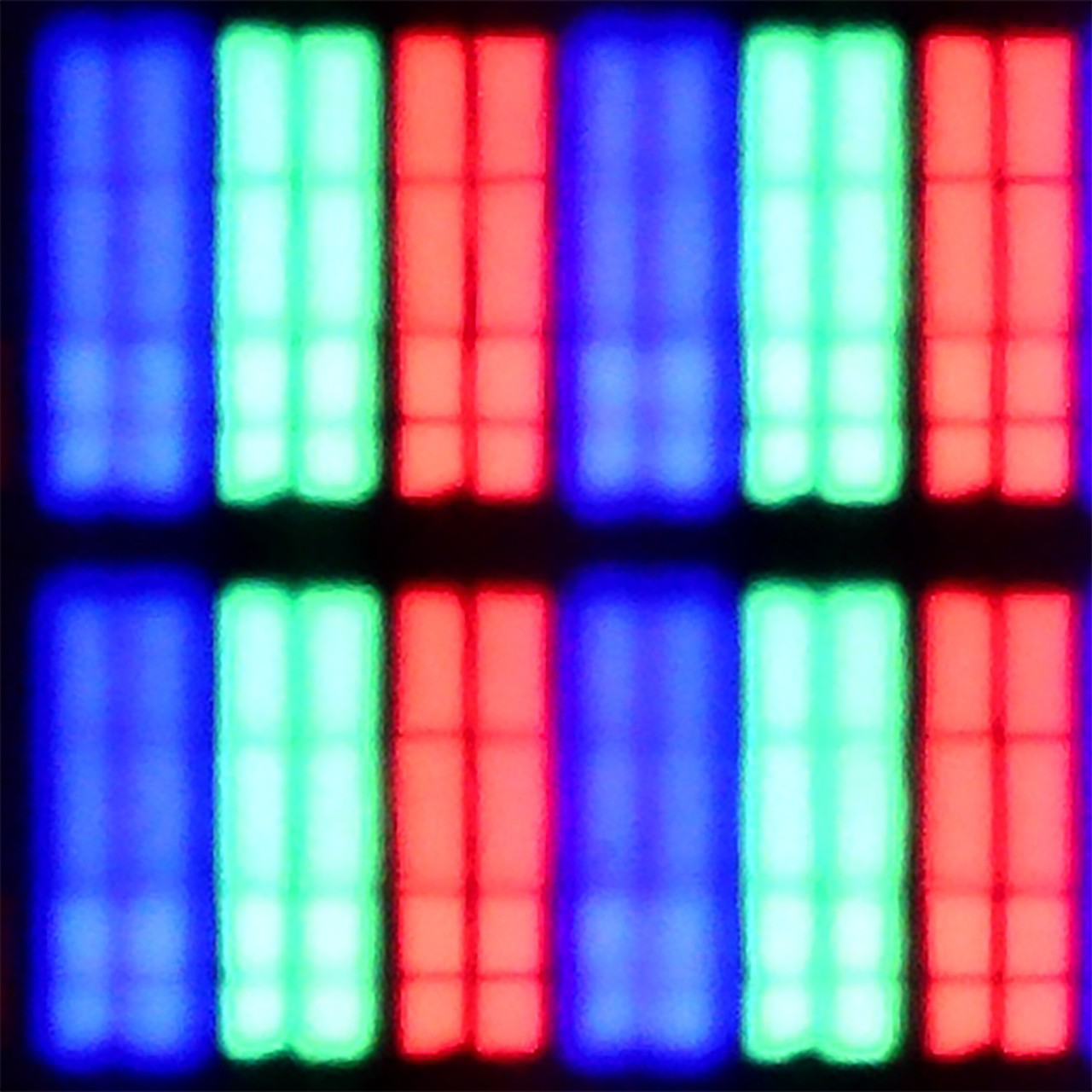
Panel uniformity and thermal imaging:

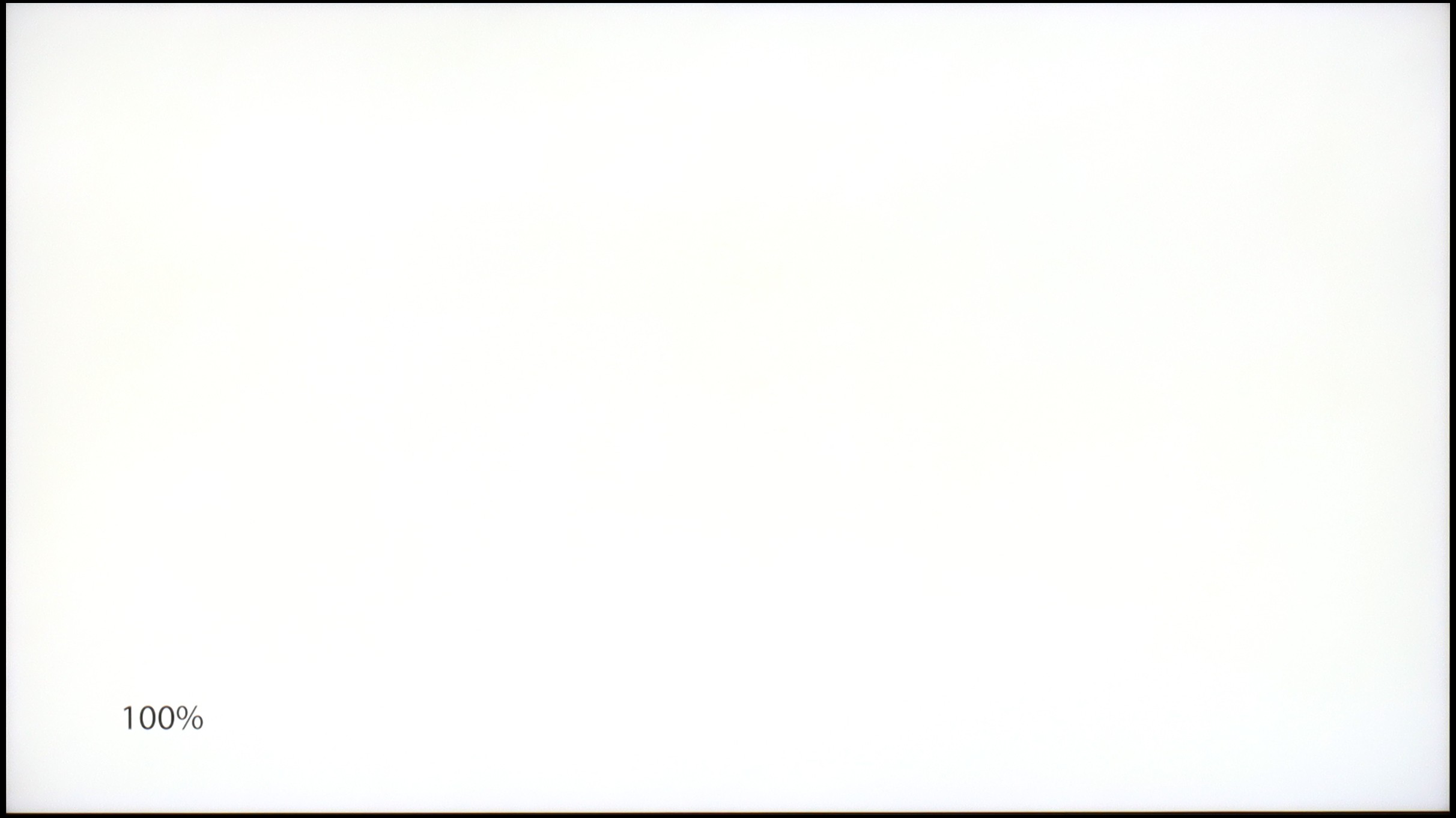
Samsung The Frame LS03D
Samsung QN85F
TV features
7.8/10
7.3/10
- HDMI inputs3 x HDMI 2.0, 1 x HDMI 2.1 40Gbps0 x HDMI 2.0, 4 x HDMI 2.1 48Gbps
- OutputsToslink (Optical audio), eARC (HDMI), ARC (HDMI)Toslink (Optical audio), eARC (HDMI), ARC (HDMI)
- Network InterfacesWi-Fi 2.4GHz, Wi-Fi 5GHz, Ethernet (LAN) 100MbpsWi-Fi 2.4GHz, Wi-Fi 5GHz, Ethernet (LAN) 100Mbps
- TV receptionDVB-T, DVB-T2, DVB-S, DVB-S2, DVB-CDVB-T, DVB-T2, DVB-S, DVB-S2, DVB-C
Classic features:
- Recording to USB (terrestrial TV)
- Recording programming
- Picture in Picture (PiP)
- RF remote control (no need to aim at the screen)
- Backlit remote control
- Teletext
- Audio only mode
- Bluetooth headphones support
- Simultaneous Bluetooth headphones & TV audio
Smart features:
- AirPlay
- Screen mirroring (Windows Miracast)
- Voice search
- Voice search in native language
- Ability to connect a keyboard and mouse




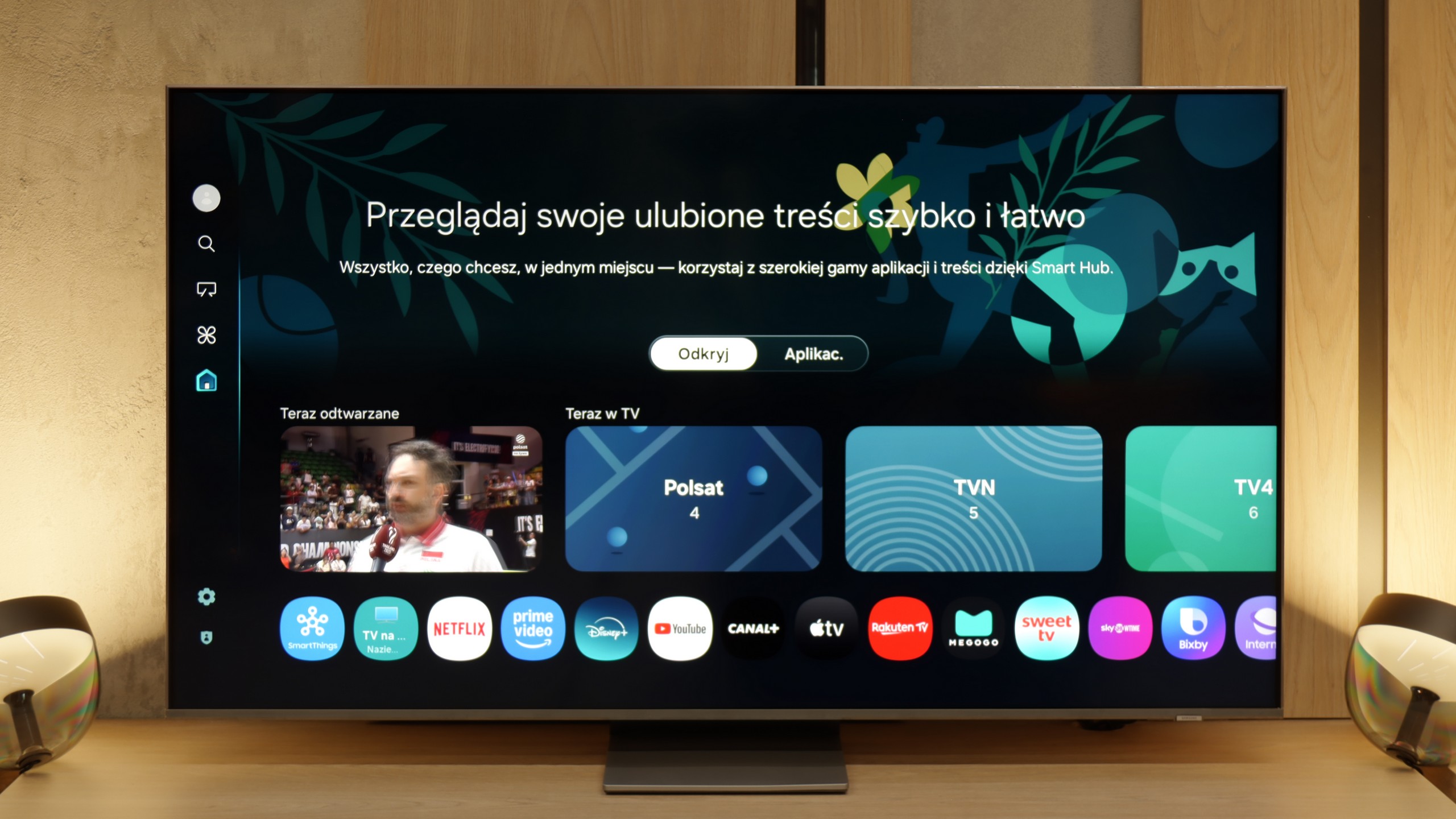
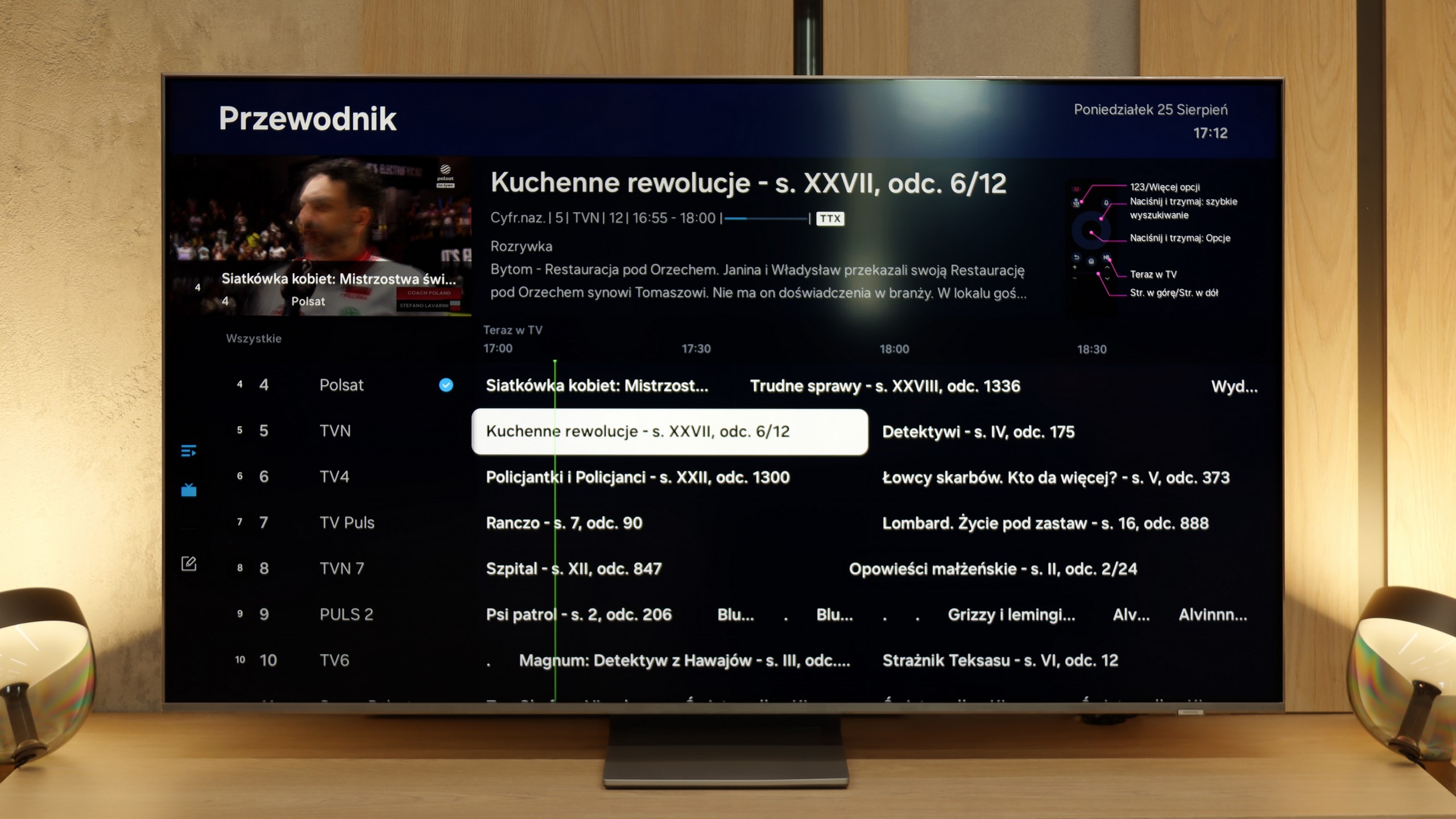
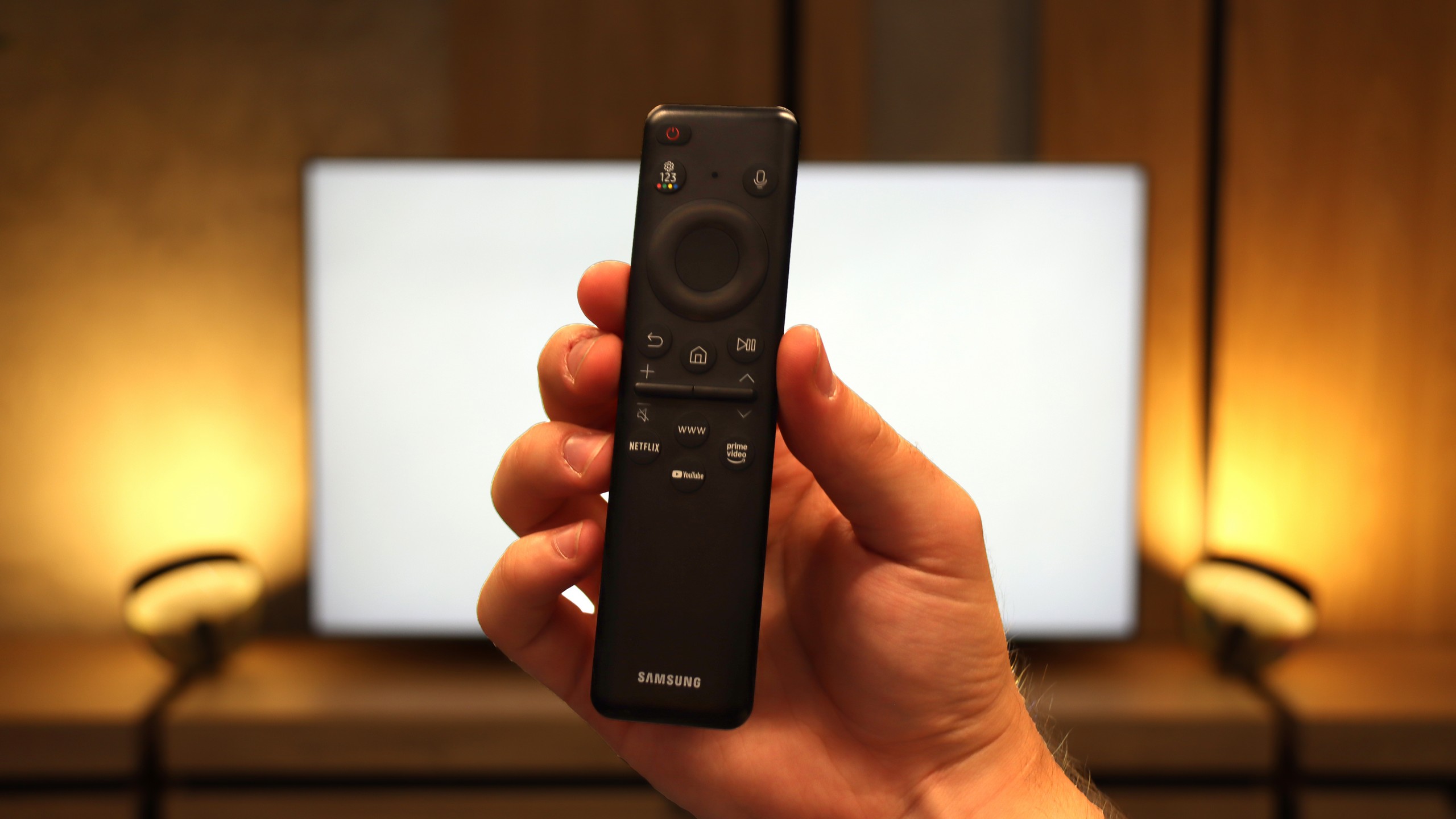
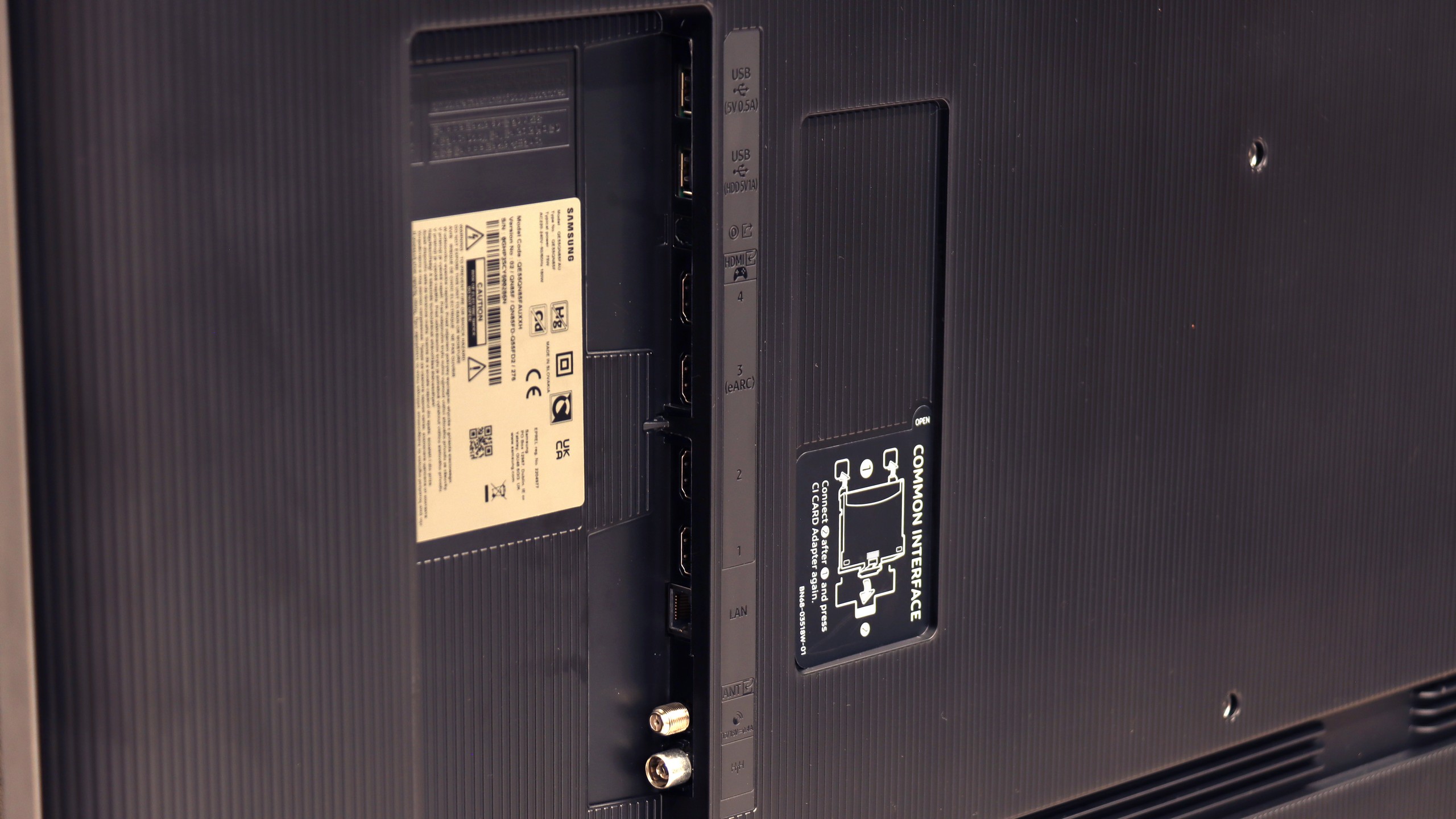
Samsung The Frame LS03D is a television that stands out from other models and is difficult to describe in a conventional way. Of course, it has all the standard Smart TV features thanks to the Tizen system. The system is responsive, comprehensive, and offers a wide selection of applications. The remote control supports voice commands in Polish, and we can connect additional devices via Bluetooth – just like in many other televisions. But that's not the essence of this model.
The biggest strength of Samsung The Frame is its design. The "Art" mode allows you to display thousands of high-resolution images, which, combined with the matte screen, look truly exceptional. The effect is surprisingly realistic and hard to compare to any other television.
The frames may not be the thinnest on the market, but they can be customised in terms of colour and style to perfectly match the interior. (Sold separately) And although the frames themselves are not ultra-thin, the entire construction is sleek and elegant. The wall mount, which is included (valued at about 400 PLN), is also worth noting. It allows the television to be mounted almost flush against the wall, with no gap, which further emphasises the "picture" effect.
And what about the cables? Samsung thought of that as well. The Frame is equipped with a One Connect module – this is an external box that connects all devices. Only one nearly invisible cable goes to the television, which carries both the signal and power. The box can be easily hidden in a cabinet or behind furniture, ensuring that nothing disrupts the aesthetic of the interior.
Samsung The Frame LS03D is more than just an ordinary television – it is a thoughtfully designed decorative element that combines modern Smart TV functionality with exceptional design and practical solutions. Although it lacks typical functions such as USB recording or PiP, it is not a model created with a conventional approach to television in mind. LS03D the frame is a television that is easy to love for its innovation, originality, and how well it fits into any interior.
Smart TV and Tizen System
Samsung QN85F runs on its proprietary operating system Tizen, which has long been one of the strongest points of the Korean manufacturer. The platform operates quickly, is well-developed and provides access to virtually all the necessary applications. Here we have AirPlay support, screen mirroring, voice search, and a very clear interface. Everything is controlled by a remote with a minimal number of buttons, designed to give us quick access to the most important applications.
Classic TV Features
When it comes to classic television features, the QN85F offers a rather basic set. The EPG interface is clear and easy to use, resembling a traditional teletext programme list. A downside is the lack of USB recording and the absence of PiP functionality, which Samsung has offered in many other models. This is because the QN85F uses single tuners. For some people, this may be a disadvantage, but considering how few viewers today use traditional linear television, it won’t matter much to most users.
SmartThings and Device Support
A strong element of the entire platform is the SmartThings app. Thanks to it, we can integrate the TV with other smart home devices – not just those from Samsung. We can connect smart lighting like Philips Hue or Yeelight, video intercoms, and many other devices to the system. SmartThings also allows us to control the TV without using a traditional remote – we can use the app on our smartphone, mouse mode, or gesture control if we have a Samsung watch. This makes the QN85F a part of a larger ecosystem and fits perfectly into the trend of smart IoT homes.
Playing files from USB
9.1/10
9.1/10
Supported photo formats:
Maximum photo resolution:

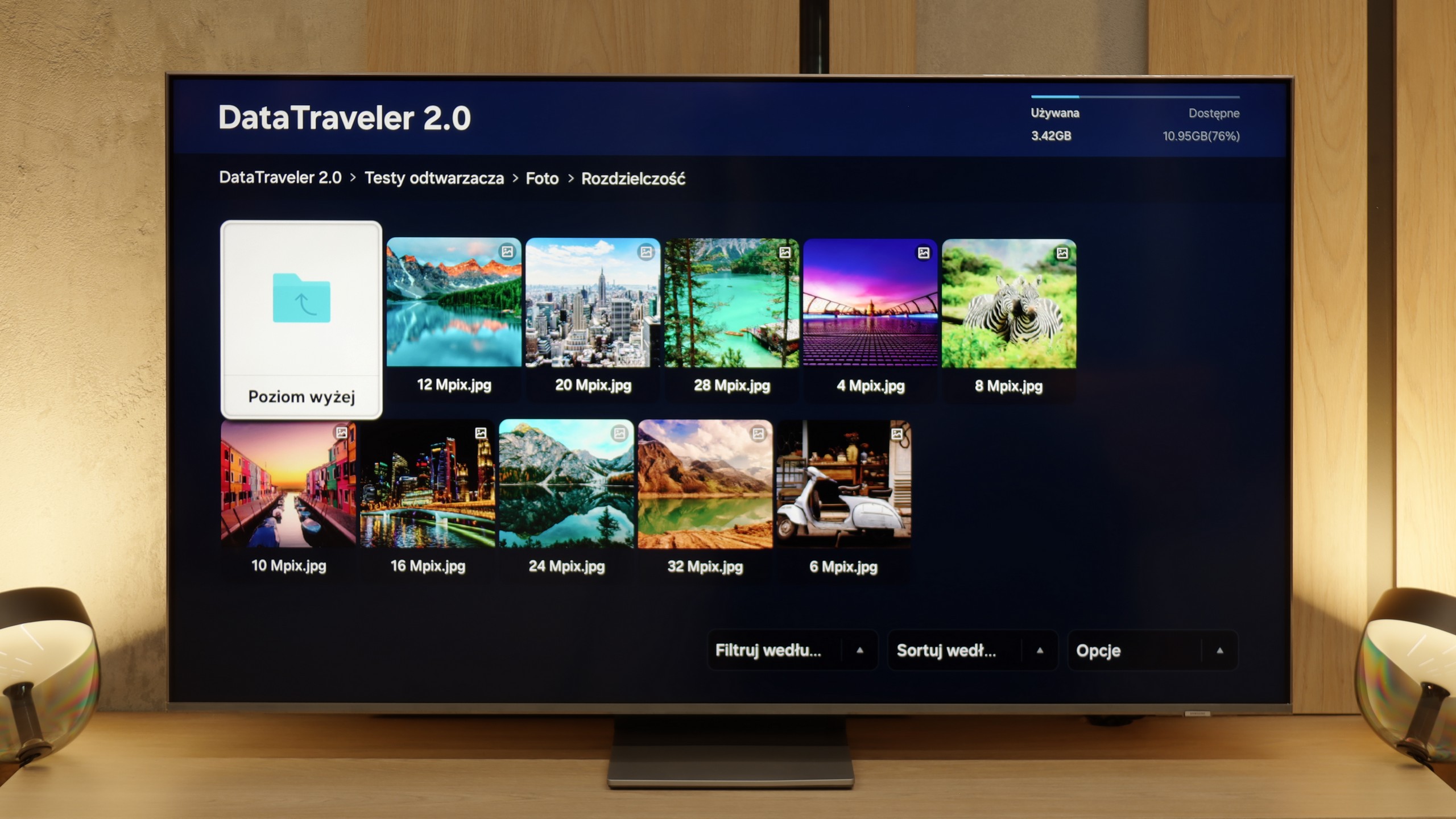
The built-in media player in Samsung The Frame handles most popular video and audio formats without any significant issues. Video files, even those with our added subtitles, play smoothly and without interruptions. The same goes for audio files – there are no major surprises here either. The handling of photo formats is somewhat less impressive. The built-in player has certain limitations and does not support all possible types of graphic files. However, nowadays most people use wireless photo transfer, so for many users this won't be a major problem.
The player in the QN85F works as most people expect, supporting practically all popular formats and is comfortably sufficient even for more demanding users. Movies, music, photos – everything runs without any issues. The only hiccup occurs with HEIC files, which are photos from Apple devices. According to the specifications, they should work, but in practice, they simply do not open. Thumbnails are visible, but the file itself refuses to launch. This looks like a common software bug. Aside from that one case, the player performs correctly and gives no reasons for complaints.
Apps
8.7/10
8.7/10














































Sound
5.8/10
7.6/10
- Maximum volume-84dB
- Dolby Digital Plus 7.1
- Dolby True HD 7.1
- Dolby Atmos in Dolby Digital Plus (JOC)
- Dolby Atmos in Dolby True HD
- DTS:X in DTS-HD MA
- DTS-HD Master Audio
The sound on Samsung The Frame is… well, quite average. The slim design of the TV, while impressive, doesn’t leave much room for decent speakers. As a result, the sound is flat and lacks dynamics – just like most TVs in this category. Samsung is clearly aware of this, as they have a special S series of soundbars designed specifically for their “lifestyle” TV line, which includes The Frame.
The Samsung QN85F is equipped with a 2.2 system with a power output of 40 W, and it performs really well for built-in speakers. The bass is pleasant, and the dialogue is clear and easy to hear even during louder scenes. Even at maximum volume, the TV doesn't experience any unwanted vibrations, and nothing rattles. At the bottom of the cabinet, there is a woofer responsible for the bass – therefore, when installing, it's important to ensure it isn't obstructed.
As for formats, the QN85F does not support DTS:X audio, which for Samsung has been a standard for several years now and forces Blu-ray enthusiasts to connect audio devices first to the home theatre system and then to the TV. However, in return, we get support for the more popular Dolby Atmos format, which can add extra depth to the sound of movies and series.
Acoustic Measurements
No acoustic data
84dBC (Max)
75dBC


